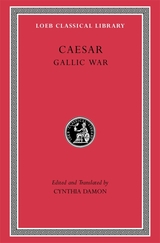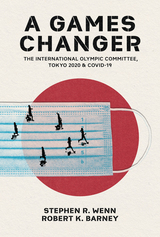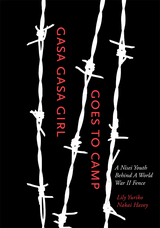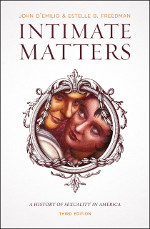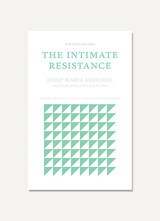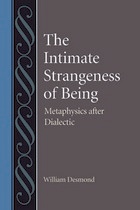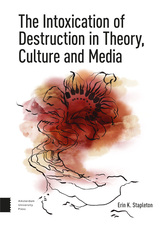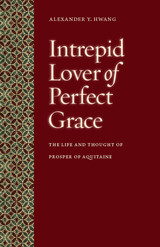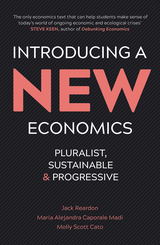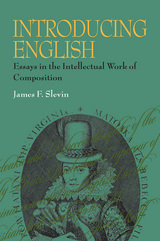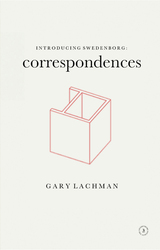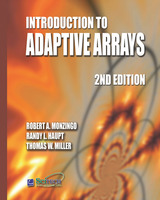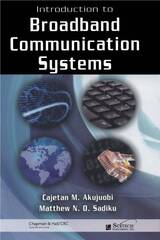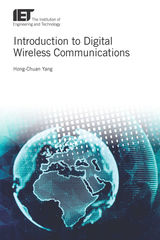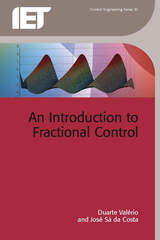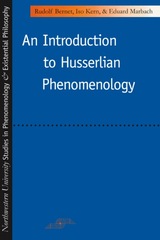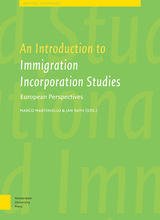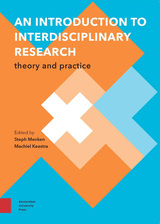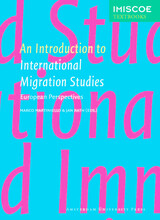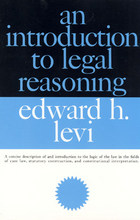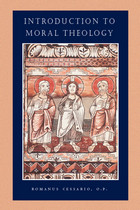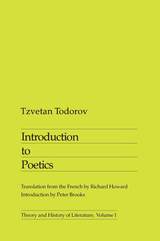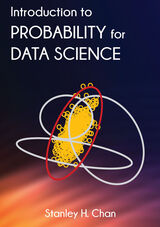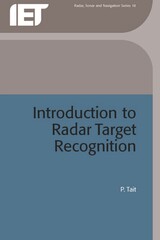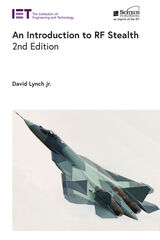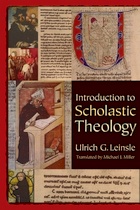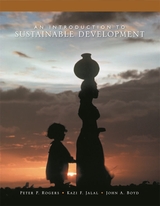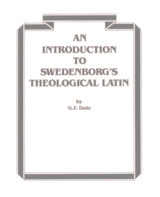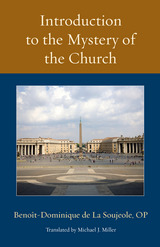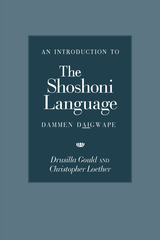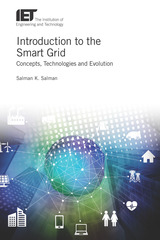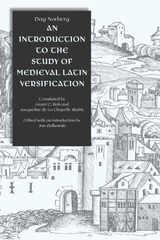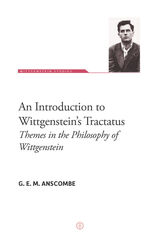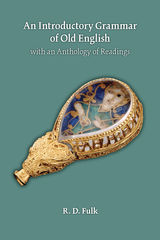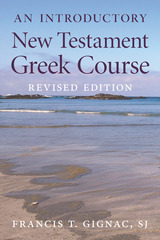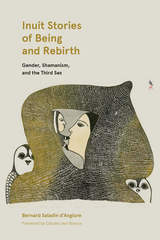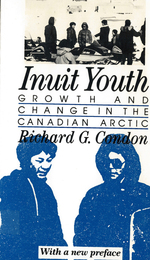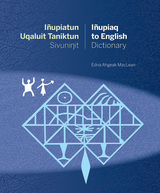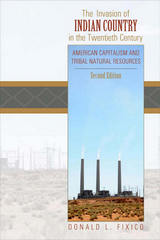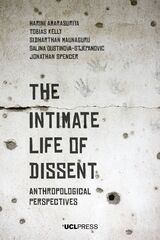 The Intimate Life of Dissent: Anthropological Perspectives
Edited by Harini Amarasuriya, Tobias Kelly, Sidharthan Maunaguru, Galina Oustinova-Stjepanovic and Jonathan Spencer
University College London, 2020 The Intimate Life of Dissent examines the meanings and implications of public acts of dissent, which, the authors argue, are never simply about abstract principles, but also come at great personal risk to both the dissidents and to those close to them. Dissent is, therefore, embedded in deep, complex, and sometimes contradictory intimate relations. This book puts acts of high principle back into the personal relations out of which they emerge and take effect, raising new questions about the relationship between intimacy and political commitment. It does so through examinations of practical examples, including Sri Lankan leftists, Soviet dissidents, Tibetan exiles, Kurdish prisoners, British pacifists, Indonesian student activists, and Jewish peace activists. The Intimate Life of Dissent will be of interest to postgraduate students and researchers in anthropology, history, political theory, and sociology, as well as to those teaching introductory undergraduate courses on political anthropology.
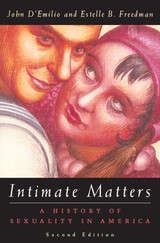 Intimate Matters: A History of Sexuality in America
John D'Emilio and Estelle B. Freedman
University of Chicago Press, 1997 The first full length study of the history of sexuality in America, Intimate Matters offers trenchant insights into the sexual behavior of Americans, from colonial times to today. D'Emilio and Freedman give us a deeper understanding of how sexuality has dramatically influenced politics and culture throughout our history.
"The book John D'Emilio co-wrote with Estelle B. Freedman, Intimate Matters, was cited by Supreme Court Justice Anthony Kennedy when, writing for a majority of court on July 26, he and his colleagues struck down a Texas law criminalizing sodomy. The decision was widely hailed as a victory for gay rights—and it derived in part, according to Kennedy's written comments, from the information he gleaned from D'Emilio's book, which traces the history of American perspectives on sexual relationships from the nation's founding through the present day. The justice mentioned Intimate Matters specifically in the court's decision."—Julia Keller, Chicago Tribune
"Fascinating. . . . [D'Emilio and Freedman] marshall their material to chart a gradual but decisive shift in the way Americans have understood sex and its meaning in their lives." —Barbara Ehrenreich, New York Times Book Review
"With comprehensiveness and care . . . D'Emilio and Freedman have surveyed the sexual patterns for an entire nation across four centuries." —Martin Bauml Duberman, Nation
"Intimate Matters is comprehensive, meticulous and intelligent." —Jonathan Yardley, Washington Post Book World
"This book is remarkable. . . . [Intimate Matters] is bound to become the definitive survey of American sexual history for years to come." —Roy Porter, Journal of the History of the Behavioral Sciences
Intimate Matters: A History of Sexuality in America, Third Edition
John D'Emilio and Estelle B. Freedman
University of Chicago Press, 2012 A groundbreaking history of American sexuality that Barbara Ehrenreich calls "fascinating"!
As the first full-length study of the history of sexuality in America, Intimate Matters offered trenchant insights into the sexual behavior of Americans from colonial times to the present. In this fully up-to-date edition of the classic work, John D’Emilio and Estelle B. Freedman give us an even deeper understanding of how sexuality has dramatically influenced politics and culture throughout our history and into the present. Hailed by critics for its comprehensive approach and cited by the US Supreme Court in the landmark Lawrence v. Texas ruling, Intimate Matters is a landmark work, offering readers insight into changes in sexuality and the ongoing growth of individual freedoms in the United States through meticulous research and lucid prose.
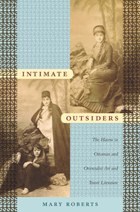 Intimate Outsiders: The Harem in Ottoman and Orientalist Art and Travel Literature
Mary Roberts
Duke University Press, 2007 Until now, the notion of a cross-cultural dialogue has not figured in the analysis of harem paintings, largely because the Western fantasy of the harem has been seen as the archetype for Western appropriation of the Orient. In Intimate Outsiders, the art historian Mary Roberts brings to light a body of harem imagery that was created through a dynamic process of cultural exchange. Roberts focuses on images produced by nineteenth-century European artists and writers who were granted access to harems in the urban centers of Istanbul and Cairo. As invited guests, these Europeans were “intimate outsiders” within the women’s quarters of elite Ottoman households. At the same time, elite Ottoman women were offered intimate access to European culture through their contact with these foreign travelers. Roberts draws on a range of sources, including paintings, photographs, and travelogues discovered in archives in Britain, Turkey, Egypt, and Denmark. She rethinks the influential harem works of the realist painter John Frederick Lewis, a British artist living in Cairo during the 1840s, whose works were granted an authoritative status by his British public despite the actual limits of his insider knowledge. Unlike Lewis, British women were able to visit Ottoman harems, and from the mid-nineteenth century on they did so in droves. Writing about their experiences in published travelogues, they undermined the idea that harems were the subject only of male fantasies. The elite Ottoman women who orchestrated these visits often challenged their guests’ misapprehensions about harem life, and a number of them exercised power as patrons, commissioning portraits from European artists. Their roles as art patrons defy the Western idea of the harem woman as passive odalisque.
 Intimate Politics: Marriage, the Market, and State Power in Southeastern China
Sara L. Friedman
Harvard University Press, 2006 On a visit to eastern Hui'an in 1994, Sara Friedman was surprised to see a married woman reluctant to visit her conjugal home. The author would soon learn that this practice was typical of the area, along with distinctive female dress styles, gender divisions of labor, and powerful same-sex networks. These customs, she would learn, have long distinguished villages in this coastal region of southeastern China from other rural Han communities.
Intimate Politics explores these practices that have constituted eastern Hui'an residents, women in particular, as an anomaly among rural Han. This book asks what such practices have come to mean in a post-1949 socialist order that has incorporated forms of marriage, labor, and dress into a developmental scale extending from the primitive to the civilized. Government reform campaigns were part of a wholesale effort to remake Chinese society by replacing its "feudal" elements with liberated socialist ideals and practices. As state actors became involved in the intimate aspects of Huidong women's lives, their official models of progress were challenged by the diversity of local practices and commitment of local residents. These politicized entanglements have generated what the author calls "intimate politics," a form of embodied struggle in which socialist civilizing agendas—from the state-sponsored reforms of the Maoist decades to the market-based "reform and opening" of the post-Mao era—have been formulated, contested, and, in some cases, transformed through the bodies and practices of local women.
 Intimate Practices: Literacy and Cultural Work in U.S. Women's Clubs, 1880-1920
Anne Ruggles Gere
University of Illinois Press, 1997
Winner of the 1995 University of Illinois Press-National Women's Studies
Association manuscript prize
Women's clubs at the turn of the century were numerous, dedicated to
a number of issues, and crossed class, religious, and racial lines. Emphasizing
the intimacy engendered by shared reading and writing in these groups,
Anne Ruggles Gere contends that these literacy practices meant that club
members took an active part in reinventing the nation during a period
of major change. Gere uses archival material that documents club members'
perspectives and activities around such issues as Americanization, womanhood,
peace, consumerism, benevolence, taste, and literature--and offers a rare
depth of insight into the interests and lives of American women from the
fin de siècle through the beginning of the roaring twenties.
Intimate Practices is unique in its exploration of a range of
women's clubs--Mormon, Jewish, white middle-class, African American, and
working class--and paints a vast and colorful multicultural, multifaceted
canvas of these widely-divergent women's groups.
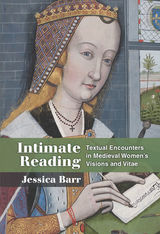 Intimate Reading: Textual Encounters in Medieval Women’s Visions and Vitae
Jessica Barr
University of Michigan Press, 2020 Intimate Reading: Textual Encounters in Medieval Women’s Visions and Vitae explores the ways that women mystics sought to make their books into vehicles for the reader’s spiritual transformation. Jessica Barr argues that the cognitive work of reading these texts was meant to stimulate intensely personal responses, and that the very materiality of the book can produce an intimate encounter with God. She thus explores the differences between mystics’ biographies and their self-presentation, analyzing as well the complex rhetorical moves that medieval women writers employ to render their accounts more effective.
This new volume is structured around five case studies. Chapters consider the biographies of 13th-century holy women from Liège, the writings of Margery Kempe, Gertrude of Helfta, Mechthild of Magdeburg, Marguerite Porete, and Julian of Norwich. At the heart of Intimate Reading is the question of how reading works—what it means to enter imaginatively and intellectually into the words of another. The volume showcases the complexity of medieval understandings of the work of reading, deepening our perception of the written word’s capacity to signify something that lies even beyond rational comprehension.
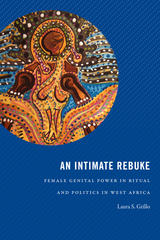 An Intimate Rebuke: Female Genital Power in Ritual and Politics in West Africa
Laura S. Grillo
Duke University Press, 2018 Throughout West African societies, at times of social crises, postmenopausal women—the Mothers—make a ritual appeal to their innate moral authority. The seat of this power is the female genitalia. Wielding branches or pestles, they strip naked and slap their genitals and bare breasts to curse and expel the forces of evil. In An Intimate Rebuke Laura S. Grillo draws on fieldwork in Côte d’Ivoire that spans three decades to illustrate how these rituals of Female Genital Power (FGP) constitute religious and political responses to abuses of power. When deployed in secret, FGP operates as spiritual warfare against witchcraft; in public, it serves as a political activism. During Côte d’Ivoire’s civil wars FGP challenged the immoral forces of both rebels and the state. Grillo shows how the ritual potency of the Mothers’ nudity and the conjuration of their sex embodies a moral power that has been foundational to West African civilization. Highlighting the remarkable continuity of the practice across centuries while foregrounding the timeliness of FGP in contemporary political resistance, Grillo shifts perspectives on West African history, ethnography, comparative religious studies, and postcolonial studies.
 Intimate Relations: Exploring Indian Sexuality
Sudhir Kakar
University of Chicago Press, 1990 Plumbing the hearts of women and men in India and exploring the relations they engage in, Sudhir Kakar gives us the first full-length study of Indian sexuality. His groundbreaking work explores India's sexual fantasies and ideals, the "unlit stage of desire where so much of our inner theater takes place."
Kakar's sources are primarily textual, celebrating the primacy of the story in Indian life. He practices a cultural psychology that distills the psyches of individuals from the literary products and social institutions of Indian culture. These include examples of lurid contemporary Hindi novels; folktales; Sanskrit, Tamil, and Hindi proverbs; hits of the Indian cinema; Gandhi's autobiography; interviews with women from the slums of Delhi; and case studies from his own psychoanalytic practice. His attentive readings of these varied narratives from a vivid portrait of sexual fantasies and realities, reflecting the universality of sexuality as well as cultural nuances specific to India.
Moving from genre to genre, Kakar offers a brilliant reading of verses from the Laws of Manu, the original source of Hindu religious laws, to uncover their psychological foundations—male terror of the female sexual appetite that shields itself by idealizing women's maternal role. Kakar also examines the psychosexual history of Gandhi at length, though his near-lifelong celibacy makes him an atypical subject. Gandhi's story is universal, Kakar says, because "we all wage war on our wants."
In India's lore and tradition, complex symbols abound—snakes that take the shape of sensual women or handsome men, celibates sleep with naked women, gods rape their daughters, and a goddess fries a king in oil. With the analyst's "third ear," Kakar listens, decodes, and translates the psychological longings that find expression in Indian sexual relations.
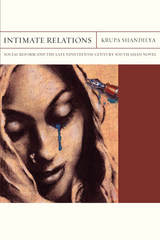 Intimate Relations: Social Reform and the Late Nineteenth-Century South Asian Novel
Krupa Shandilya
Northwestern University Press, 2017 Intimate Relations remaps the discussion on gender and the nation in South Asia through a close study of the domestic novel as a literary genre and a tool for social reform. As a product of the intersection of literary and social reform movements, in the late nineteenth century the domestic novel became a site for literary innovation and also for rethinking women’s roles in society and politics. Krupa Shandilya focuses primarily on social reform movements that negotiated the intimate relations between men and women in Hindu and Muslim society, namely, the widow remarriage act in Bengal (1856) and the education of women promoted by the Aligarh movement (1858–1900). Both movements were invested in recovering woman as a “respectable” subject for the Hindu and Muslim nation, where respectability connoted asexual spirituality. While most South Asian literary scholarship has focused on a normative Hindu woman, Intimate Relations couples discussion of the representation of the widow in bhadralok (upper-caste, middle-class) society with that of the courtesan of sharif (upper-class, Muslim, feudal) society in Bengali and Urdu novels from the 1880s to the 1920s. By drawing together their disparate histories in the context of contemporaneous social reform movements, Shandilya reflects on the similarities of Hindu and Islamic constructions of the gendered nation.
The Intimate Resistance
Josep Maria Esquirol, Translated by Douglas Suttle
Fum d'Estampa Press, 2021 A keen and deeply beautiful reflection on the human condition and our relationships with ourselves and others, The Intimate Resistance is an intelligent and thoughtful essay on how we as individuals can warm, protect and guide those around us. Esquirol’s profound, careful, and brilliantly written words introduce us to a new way of thinking about the human condition.
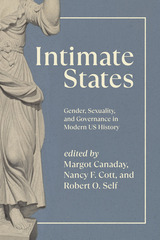 Intimate States: Gender, Sexuality, and Governance in Modern US History
Edited by Margot Canaday, Nancy F. Cott, and Robert O. Self
University of Chicago Press, 2021 Fourteen essays examine the unexpected relationships between government power and intimate life in the last 150 years of United States history.
The last few decades have seen a surge of historical scholarship that analyzes state power and expands our understanding of governmental authority and the ways we experience it. At the same time, studies of the history of intimate life—marriage, sexuality, child-rearing, and family—also have blossomed. Yet these two literatures have not been considered together in a sustained way. This book, edited and introduced by three preeminent American historians, aims to close this gap, offering powerful analyses of the relationship between state power and intimate experience in the United States from the Civil War to the present.
The fourteen essays that make up Intimate States argue that “intimate governance”—the binding of private daily experience to the apparatus of the state—should be central to our understanding of modern American history. Our personal experiences have been controlled and arranged by the state in ways we often don’t even see, the authors and editors argue; correspondingly, contemporary government has been profoundly shaped by its approaches and responses to the contours of intimate life, and its power has become so deeply embedded into daily social life that it is largely indistinguishable from society itself. Intimate States makes a persuasive case that the state is always with us, even in our most seemingly private moments.
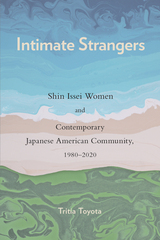 Intimate Strangers: Shin Issei Women and Contemporary Japanese American Community, 1980-2020
Toyota, Tritia
Temple University Press, 2023 At the end of the twentieth century, many twenty-something Japanese women migrated to places like Southern California with few skills and an overall lack of human capital. These women, members of the shin Issei community, sought economic opportunities unavailable to them in their homeland. In Intimate Strangers, shin Issei women tell stories of precarity, inequality, and continuing marginality, first in Japan, where they were restricted by gendered social structures, and later in the United States, where their experiences were compounded by issues such as citizenship.
Intimate Strangers charts the experiences of shin Issei lives: their existence in Japan prior to migration, their motivations for moving to the United States, their settlement, and their growing awareness of their place in American society. Toyota chronicles how these resilient young women became active agents in circumventing social restrictions to fashion new lives of meaning. The Nikkei community (Americans of Japanese ancestry who were born in the United States) has been transformed by the inclusion of shin Issei, and Toyota describes the tensions around intergroup negotiations over race, identity, and the possibility of common belonging.
Intimate Strangers is a perceptive study of migration and community incorporation enacted around cultural differences and processes.
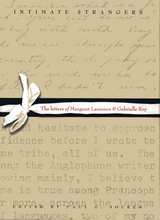 Intimate Strangers: The Letters of Margaret Laurence and Gabrielle Roy
Margaret Laurence
University of Manitoba Press, 2004 The books of Margaret Laurence and Gabrielle Roy are among the most beloved in Canadian literature. In 1976, when both were at the height of their careers, they began a seven-year written correspondence. Laurence had just published her widely acclaimed The Diviners, for which she won her second Governor-General’s Award, and Roy had returned to the centre of the literary stage with a series of books that many critics now consider her richest and most mature works. Although both women had been born and raised in Manitoba — Laurence in Neepawa and Roy in St. Boniface — they met only once, in 1978 at a conference in Calgary. As these letters reveal, their prairie background created a common understanding of place and culture that bridged the differences of age and language. Here Laurence and Roy discuss everything from their own and each other’s writing, to Canadian politics, housekeeping, publishing, and their love of nature. With a thoughtful introduction by Paul G. Socken, these lovely and intimate letters record the moving, affectionate friendship between two remarkable women.
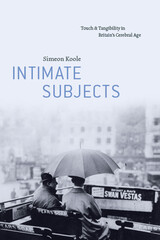 Intimate Subjects: Touch and Tangibility in Britain's Cerebral Age
Simeon Koole
University of Chicago Press, 2024 An insightful history of nineteenth- and twentieth-century Britain told through a single sense: touch.
When, where, and who gets to touch and be touched, and who decides? What do we learn through touch? How does touch bring us closer together or push us apart? These are urgent contemporary questions, but they have their origins in late nineteenth- and early twentieth-century Britain, when new urban encounters compelled intense discussion of what touch was, and why it mattered. In this vividly written book, Simeon Koole excavates the history of these concerns and reveals how they continue to shape ideas about “touch” in the present.
Intimate Subjects takes us to the bustling railway stations, shady massage parlors, all-night coffee stalls, and other shared spaces where passengers, customers, vagrants, and others came into contact, leading to new understandings of touch. We travel in crammed subway cars, where strangers negotiated the boundaries of personal space. We visit tea shops where waitresses made difficult choices about autonomy and consent. We enter classrooms in which teachers wondered whether blind children could truly grasp the world and labs in which neurologists experimented on themselves and others to unlock the secrets of touch. We tiptoe through London’s ink-black fogs, in which disoriented travelers became newly conscious of their bodies and feared being accosted by criminals. Across myriad forgotten encounters such as these, Koole shows, touch remade what it meant to be embodied—as well as the meanings of disability, personal boundaries, and scientific knowledge.
With imagination and verve, Intimate Subjects offers a new way of theorizing the body and the senses, as well as a new way of thinking about embodiment and vulnerability today.
 Intimate Subjects: Touch and Tangibility in Britain's Cerebral Age
Simeon Koole
University of Chicago Press, 2024 This is an auto-narrated audiobook version of this book. The queer recluse, the shambling farmer, the clannish hill folk—white rural populations have long disturbed the American imagination, alternately revered as moral, healthy, and hardworking, and feared as antisocial or socially uncouth. In Peculiar Places, Ryan Lee Cartwright examines the deep archive of these contrary formations, mapping racialized queer and disability histories of white social nonconformity across the rural twentieth-century United States.
Sensationalized accounts of white rural communities’ aberrant sexualities, racial intermingling, gender transgressions, and anomalous bodies and minds, which proliferated from the turn of the century, created a national view of the perversity of white rural poverty for the American public. Cartwright contends that these accounts, extracted and estranged from their own ambivalent forum of community gossip, must be read in kind: through a racialized, materialist queercrip optic of the deeply familiar and mundane. Taking in popular science, documentary photography, news media, documentaries, and horror films, Peculiar Places orients itself at the intersections of disability studies, queer studies, and gender studies to illuminate a racialized landscape both profoundly ordinary and familiar.
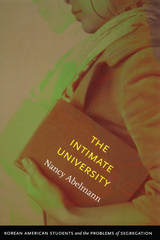 The Intimate University: Korean American Students and the Problems of Segregation
Nancy Abelmann
Duke University Press, 2009 The majority of the 30,000-plus undergraduates at the University of Illinois, Urbana-Champaign—including the large population of Korean American students—come from nearby metropolitan Chicago. Among the campus’s largest non-white ethnicities, Korean American students arrive at college hoping to realize the liberal ideals of the modern American university, in which individuals can exit their comfort zones to realize their full potential regardless of race, nation, or religion. However, these ideals are compromised by their experiences of racial segregation and stereotypes, including images of instrumental striving that set Asian Americans apart. In The Intimate University, Nancy Abelmann explores the tensions between liberal ideals and the particularities of race, family, and community in the contemporary university. Drawing on ten years of ethnographic research with Korean American students at the University of Illinois and closely following multiple generations of a single extended Korean American family in the Chicago metropolitan area, Abelmann investigates the complexity of racial politics at the American university today. Racially hyper-visible and invisible, Korean American students face particular challenges as they try to realize their college dreams against the subtle, day-to-day workings of race. They frequently encounter the accusation of racial self-segregation—a charge accentuated by the fact that many attend the same Evangelical Protestant church—even as they express the desire to distinguish themselves from their families and other Korean Americans. Abelmann concludes by examining the current state of the university, reflecting on how better to achieve the university’s liberal ideals despite its paradoxical celebration of diversity and relative silence on race.
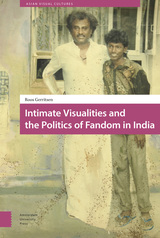 Intimate Visualities and the Politics of Fandom in India
Roos Gerritsen
Amsterdam University Press, 2019 In Intimate Visualities and the Politics of Fandom in India, Gerritsen explores the circulation of images of a movie star named Rajinikanth. Cities and towns in the south Indian state Tamil Nadu are consistently ornamented with huge billboards, murals and myriad posters featuring political leaders as well as movie stars. A selective part of these images is put up by their fan clubs. Tamil movie fans typically manifest themselves by putting up images of their star in public spaces and by generating a plethora of images in their homes. Gerritsen argues that these images are a crucial part of the everyday affective modes of engagement with family members and film stars but they are also symbolizing the political realm in which fans situate themselves. At the same time, Gerritsen shows how these image productions seem to concur with other visual regimes articulated in government restrictions, world class imaginaries and upper class moralities as presented on India's urban streets.
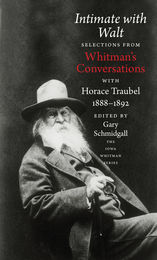 Intimate With Walt: Whitmans Conversataions With Horace Traubel
Gary Schmidgall
University of Iowa Press, 2001 In March 1888 Horace Traubel, Whitman's loyal and hardworking assistant, began to record his almost daily conversations with the most famous resident of Camden. The result: more than 1,900,000 words that were eventually published between 1906 and 1996 in nine volumes. Titled With Walt Whitman in Camden, these volumes contain much that is mundane and repetitive, but they also include many passages crucial for a full and humane understanding of America's first great national poet.
In Intimate with Walt Gary Schmidgall has condensed Traubel's nearly 5,000 pages into one manageable volume featuring the many self-revealing, humorous, nostalgic, and often curmudgeonly words of the Good Gray Poet. The book is divided into five sections, each consisting of several chapters: the first, presenting Walt on himself, his family, and his daily life and visitors at the only home he ever owned; the second, on his artistic credos, the literary life, and a large array of comments on the writing, publication of, and critical reaction to Leaves of Grass; the third, focusing on his friends, admirers, idols, and lovers; the fourth and longest, presenting his no-holds-barred views on a variety of topics, including the American scene, race, religion, music, and even alcohol; and finally, a gathering of passages revealing Whitman's struggles with his infirmities, his poignant final days, and Traubel's observations on Whitman's deathbed scene and burial rites.
Whitman was the great poet of autobiography, and with this volume we gain entry into a most remarkable life in his own words. Whimsical and highly entertaining, poignant and moving, illuminating and candid, Intimate with Walt makes accessible the most amazing oral history project in all of American letters.
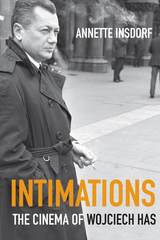 Intimations: The Cinema of Wojciech Has
Annette Insdorf
Northwestern University Press, 2017 In this first study in English of a master of Polish cinema, Annette Insdorf explores Has’s thirteen feature films with the same deep insight of her groundbreaking book on Krzysztof Kieslowski, Double Lives, Second Chances (Northwestern, 2013).
Wojciech Has’s films are still less known outside of his native Poland than those of his countrymen Andrzej Wajda, Krzysztof Zanussi, and Krzysztof Kieslowski. Yet thanks to his singular vision, many critics rank Has among the masters of world cinema. Some of his movies have developed a cult following, notably The Saragossa Manuscript, the favorite film of the Grateful Dead’s Jerry Garcia, which has been praised by directors such as Luis Buñuel, Francis Ford Coppola, and Roman Polanski.
Has’s films reveal the inner lives of his characters, which he portrays by giving free rein to his own wildly creative imagination. In addition toThe Saragossa Manuscript, his diverse and innovative filmography includes The Hourglass Sanatorium, a vividly surreal depiction of Hassidic life in Poland between the world wars; The Noose, a stark poetic drama about a lucid alcoholic who knows he will not be able to kick the habit; and How to Be Loved, in which an actress remembers her wartime past.
Has made disparate but formally striking movies infused with European strains of existentialism and the avant-garde. With many of his films being restored and rereleased, new generations of film lovers are discovering his artistic genius. Intimations: The Cinema of Wojciech Has is the definitive guide in English to his work.
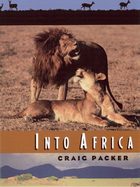 Into Africa
Craig Packer
University of Chicago Press, 1994 Craig Packer takes us into Africa for a journey of fifty-two days in the fall of 1991. But this is more than a tour of magnificent animals in an exotic, faraway place. A field biologist since 1972, Packer began his work studying primates at Gombe and then the lions of the Serengeti and the Ngorongoro Crater with his wife and colleague Anne Pusey. Here, he introduces us to the real world of fieldwork—initiating assistants to lion research in the Serengeti, helping a doctoral student collect data, collaborating with Jane Goodall on primate research.
As in the works of George Schaller and Cynthia Moss, Packer transports us to life in the field. He is addicted to this land—to the beauty of a male lion striding across the Serengeti plains, to the calls of a baboon troop through the rain forests of Gombe—and to understanding the animals that inhabit it. Through his vivid narration, we feel the dust and the bumps of the Arusha Road, smell the rosemary in the air at lunchtime on a Serengeti verandah, and hear the lyrics of the Grateful Dead playing off bootlegged tapes.
Into Africa also explores the social lives of the animals and the threats to their survival. Packer grapples with questions he has passionately tried to answer for more than two decades. Why do female lions raise their young in crèches? Why do male baboons move from troop to troop while male chimps band together? How can humans and animals continue to coexist in a world of diminishing resources? Immediate demands—logistical nightmares, political upheavals, physical exhaustion—yield to the larger inescapable issues of the interdependence of the land, the animals, and the people who inhabit it.
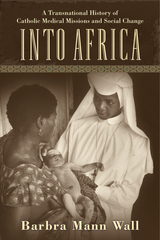 Into Africa: A Transnational History of Catholic Medical Missions and Social Change
Wall, Barbra Mann
Rutgers University Press, 2015 Winner of the 2016 Lavinia Dock Award from the American Association for the History of Nursing
Awarded first place in the 2016 American Journal of Nursing Book of the Year Award in the History and Public Policy category
The most dramatic growth of Christianity in the late twentieth century has occurred in Africa, where Catholic missions have played major roles. But these missions did more than simply convert Africans. Catholic sisters became heavily involved in the Church’s health services and eventually in relief and social justice efforts. In Into Africa, Barbra Mann Wall offers a transnational history that reveals how Catholic medical and nursing sisters established relationships between local and international groups, sparking an exchange of ideas that crossed national, religious, gender, and political boundaries.
Both a nurse and a historian, Wall explores this intersection of religion, medicine, gender, race, and politics in sub-Saharan Africa, focusing on the years following World War II, a period when European colonial rule was ending and Africans were building new governments, health care institutions, and education systems. She focuses specifically on hospitals, clinics, and schools of nursing in Ghana and Uganda run by the Medical Mission Sisters of Philadelphia; in Nigeria and Uganda by the Irish Medical Missionaries of Mary; in Tanzania by the Maryknoll Sisters of New York; and in Nigeria by a local Nigerian congregation. Wall shows how, although initially somewhat ethnocentric, the sisters gradually developed a deeper understanding of the diverse populations they served. In the process, their medical and nursing work intersected with critical social, political, and cultural debates that continue in Africa today: debates about the role of women in their local societies, the relationship of women to the nursing and medical professions and to the Catholic Church, the obligations countries have to provide care for their citizens, and the role of women in human rights.
A groundbreaking contribution to the study of globalization and medicine, Into Africa highlights the importance of transnational partnerships, using the stories of these nuns to enhance the understanding of medical mission work and global change.
Into Daylight
Jeffrey Harrison
Tupelo Press, 2014 Poetry. Winner of the Dorset Prize, selected by Tom Sleigh. In his new book, Jeffrey Harrison reflects on the daily familiarities and fragilities experienced in a long marriage and as a parent of teenagers, refracted through the shock of a brother's suicide. Limpid and direct on the surface but eloquent in resonance, INTO DAYLIGHT asks what comes after: How to live, how to continue writing, and how to find one's proper relationship with the world and restore some semblance of delight, while giving voice to sadness and pain.
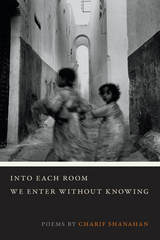 Into Each Room We Enter without Knowing
Charif Shanahan
Southern Illinois University Press, 2017 Finalist, Lambda Literary Award for Gay Poetry
Finalist, Publishing Triangle's Thom Gunn Award
In this affecting poetry debut, Charif Shanahan explores what it means to be fully human in our wounded and divided world. In poised yet unrelenting lyric poems, Shanahan—queer and mixed-race—confronts the challenges of a complex cultural inheritance, informed by colonialism and his mother’s immigration to the United States from Morocco, navigating racial constructs, sexuality, family, and the globe in search of “who we are to each other . . . who we are to ourselves.”
With poems that weave from Marrakesh to Zürich to London, through history to the present day, this book is, on its surface, an uncompromising exploration of identity in personal and collective terms. Yet the collection is, most deeply, about intimacy and love, the inevitability of human separation and the challenge of human connection. Urging us to reexamine our own place in the broader human tapestry, Into Each Room We Enter without Knowing announces the arrival of a powerful and necessary new voice.
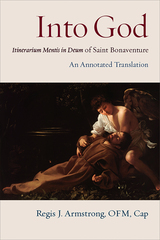 Into God: An Annotated Translation of Saint Bonaventure's Itinerarium Mentis in Deum
Cap. Regis J. Armstrong,OFM
Catholic University of America Press, 2020 An annotated translation of Bonaventure’s Itinerarium mentis in Deum presenting both the Latin text side-by-side with a new English translation which attempts to avoid the use of Latin cognates while remaining critically faithful to Bonaventure’s text. Using endnotes to open the text, Regis Armstrong opens each chapter from the perspective of historical theology referring the reader to authors prior to Bonaventure, e.g. Augustine, the Victorines, Philip the Chancellor, Avicenna, as well as first-and-second-generation Franciscan authors. While maintaining Bonaventure’s architectonic approach, Armstrong studies each chapter as Bonaventure does by focusing on its unique character, e.g. by means of cosmology, epistemology, biblical theology, mystical theology. In a same way, the translator attempts to explain his translation of certain cognates into Anglo-Saxon English by citing contemporary linguistic tools, e.g., Brepolis Latin Texts.
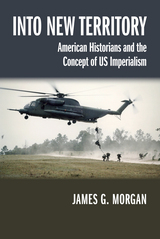 Into New Territory: American Historians and the Concept of US Imperialism
James G. Morgan
University of Wisconsin Press, 2014 The idea that the United States—a nation founded after a war of independence—operates as an imperialist power on the world stage has gained considerable traction since the turn of the twenty-first century. But just a few decades earlier, this position was considered radical and even “un-American.” How did this dramatic change come about?
Tracing the emergence of the concept of US imperialism, James G. Morgan shows how radical and revisionist scholars in the 1950s and 1960s first challenged the paradigm of denying an American empire. As the Vietnam War created a critical flashpoint, bringing the idea of American imperialism into the US mainstream, radical students of the New Left turned toward Marxist critiques, admiring revolutionaries like Che Guevara. Simultaneously, a small school of revisionist scholars, led by historian William Appleman Williams at the University of Wisconsin, put forward a progressive, nuanced critique of American empire grounded in psychology, economics, and broader historical context. It is this more sophisticated strand of thinking, Morgan argues, which demonstrated that empire can be an effective analytical framework for studying US foreign policy, thus convincing American scholars to engage with the subject seriously for the first time.
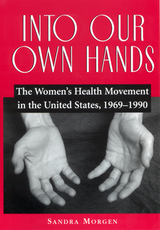 Into Our Own Hands: The Women's Health Movement in the United States, 1969–1990
Morgen, Sandra
Rutgers University Press, 2002 Recent history has witnessed a revolution in womens health care. Beginning in the late 1960s, women in communities across the United States challenged medical and male control over womens health. Few people today realize the extent to which these grassroots efforts shifted power and responsibility from the medical establishment into womens hands as health care consumers, providers, and advocates. Into Our Own Hands traces the womens health care movement in the United States. Richly documented, this study is based on more than a decade of research, including interviews with leading activists; documentary material from feminist health clinics and advocacy organizations; a survey of womens health movement organizations in the early 1990s; and ethnographic fieldwork. Sandra Morgen focuses on the clinics born from this movement, as well as how the movements encounters with organized medicine, the state, and ascendant neoconservative and neoliberal political forces of the 1970s to the1980s shaped the confrontations and accomplishments in womens health care. The book also explores the impact of political struggles over race and class within the movement organizations.
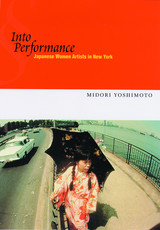 Into Performance: Japanese Women Artists in New York
Yoshimoto, Midori
Rutgers University Press, 2005 The 1960s was a time of incredible freedom and exploration in the art world, particularly in New York City, which witnessed the explosion of New Music, Happenings, Fluxus, New Dance, pop art, and minimalist art. Also notable during this period, although often overlooked, is the inordinate amount of revolutionary art that was created by women. Into Performance fills a critical gap in both American and Japanese art history as it brings to light the historical significance of five women artists-Yoko Ono, Yayoi Kusama, Takako Saito, Mieko Shiomi, and Shigeko Kubota. Unusually courageous and self-determined, they were among the first Japanese women to leave their country-and its male-dominated, conservative art world-to explore the artistic possibilities in New York. They not only benefited from the New York art scene, however, they played a major role in the development of international performance and intermedia art by bridging avant garde movements in Tokyo and New York. This book traces the pioneering work of these five women artists and the socio-cultural issues that shaped their careers. Into Performance also explores the transformation of these artists' lifestyle from traditionally confined Japanese women to internationally active artists. Yoshimoto demonstrates how their work paved the way for younger Japanese women artists who continue to seek opportunities in the West today.
Into Sūr’s Ocean: Poetry, Context, and Commentary
John Stratton Hawley
Harvard University Press Sur’s Ocean: Poems from the Early Tradition was published in 2015 as the fifth volume of the Murty Classical Library of India. That book contains Kenneth Bryant’s critical reconstructions of 433 poems of Surdas that circulated in the sixteenth century, when this great Hindi poet lived, and it includes facing-page, English verse translations by John Stratton Hawley. The name traditionally assigned to these poems is Sursagar, meaning Sur’s Ocean.
Into Sūr’s Ocean: Poetry, Context, and Commentary picks up many threads from that volume, and provides a substantial introduction to the poet, his medium, and his oeuvre; an overview of editions, including Bryant’s; an analysis of the challenges Hawley faced as translator; and poem-by-poem commentary. Each commentary is a brief, independent essay. This book offers a deep—and rewarding—dive into Sur’s Ocean.
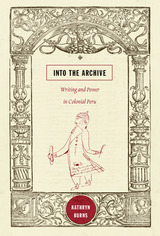 Into the Archive: Writing and Power in Colonial Peru
Kathryn Burns
Duke University Press, 2010 Writing has long been linked to power. For early modern people on both sides of the Atlantic, writing was also the province of notaries, men trained to cast other people’s words in official forms and make them legally true. Thus the first thing Columbus did on American shores in October 1492 was have a notary record his claim of territorial possession. It was the written, notarial word—backed by all the power of Castilian enforcement—that first constituted Spanish American empire. Even so, the Spaniards who invaded America in 1492 were not fond of their notaries, who had a dismal reputation for falsehood and greed. Yet Spaniards could not do without these men. Contemporary scholars also rely on the vast paper trail left by notaries to make sense of the Latin American past. How then to approach the question of notarial truth? Kathryn Burns argues that the archive itself must be historicized. Using the case of colonial Cuzco, she examines the practices that shaped document-making. Notaries were businessmen, selling clients a product that conformed to local “custom” as well as Spanish templates. Clients, for their part, were knowledgeable consumers, with strategies of their own for getting what they wanted. In this inside story of the early modern archive, Burns offers a wealth of possibilities for seeing sources in fresh perspective.
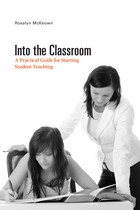 Into the Classroom: A Practical Guide for Starting Student Teaching
Rosalyn McKeown
University of Tennessee Press, 2011
Student teaching can be an endeavor fraught with anxiety. Those entering the classroom for the first time face the daunting challenge of translating coursework on the theory of teaching into real-world experience. Common questions for anxious student teachers include: Will I be a good teacher? Will I ever get control of my classroom? How can I do all of this grading and plan for next week at the same time? This helpful guide by teacher educator Rosalyn McKeown offers practical suggestions for student teachers, interns, and teacher candidates just starting out in a secondary school classroom. This easy-to-read text enables new educators to rapidly advance their teaching skills early in their pre-service experiences.
After exploring the pitfalls of inexperience and providing helpful guidance on maintaining order in the classroom, McKeown focuses on teaching skills. She advises readers on writing objectives and lesson plans, creating interesting ways to start and end class, introducing variety into the classroom, lecturing, asking meaningful questions, and using visual aids. Among the other topics discussed are setting up a classroom, recognizing differences in learning styles, and developing an individual teaching style. Sidebars scattered throughout the text offer useful advice on everything from how to deal with stage fright and distracting noises from outside, to planning for block scheduling and avoiding the attributes of a boring teacher.
With McKeown’s own list of expectations for her classes, templates for hall passes and lesson plans, and scores of tips garnered from years of experience, Into the Classroom provides information a first-time teacher needs to enter the secondary classroom with confidence.
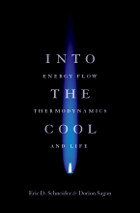 Into the Cool: Energy Flow, Thermodynamics, and Life
Eric D. Schneider and Dorion Sagan
University of Chicago Press, 2005 Scientists, theologians, and philosophers have all sought to answer the questions of why we are here and where we are going. Finding this natural basis of life has proved elusive, but in the eloquent and creative Into the Cool, Eric D. Schneider and Dorion Sagan look for answers in a surprising place: the second law of thermodynamics. This second law refers to energy's inevitable tendency to change from being concentrated in one place to becoming spread out over time. In this scientific tour de force, Schneider and Sagan show how the second law is behind evolution, ecology,economics, and even life's origin. Working from the precept that "nature abhors a gradient," Into the Cool details how complex systems emerge, enlarge, and reproduce in a world tending toward disorder. From hurricanes here to life on other worlds, from human evolution to the systems humans have created, this pervasive pull toward equilibrium governs life at its molecular base and at its peak in the elaborate structures of living complex systems. Schneider and Sagan organize their argument in a highly accessible manner, moving from descriptions of the basic physics behind energy flow to the organization of complex systems to the role of energy in life to the final section, which applies their concept of energy flow to politics, economics, and even human health. A book that needs to be grappled with by all those who wonder at the organizing principles of existence, Into the Cool will appeal to both humanists and scientists. If Charles Darwin shook the world by showing the common ancestry of all life, so Into the Cool has a similar power to disturb—and delight—by showing the common roots in energy flow of all complex, organized, and naturally functioning systems. “Whether one is considering the difference between heat and cold or between inflated prices and market values, Schneider and Sagan argue, we can apply insights from thermodynamics and entropy to understand how systems tend toward equilibrium. The result is an impressive work that ranges across disciplinary boundaries and draws from disparate literatures without blinking.”—Publishers Weekly
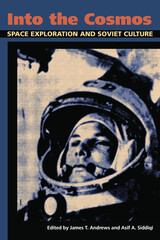 Into the Cosmos: Space Exploration and Soviet Culture
James T. Andrews
University of Pittsburgh Press, 2011
The launch of the Sputnik satellite in October 1957 changed the course of human history. In the span of a few years, Soviets sent the first animal into space, the first man, and the first woman. These events were a direct challenge to the United States and the capitalist model that claimed ownership of scientific aspiration and achievement.
The success of the space program captured the hopes and dreams of nearly every Soviet citizen and became a critical cultural vehicle in the country’s emergence from Stalinism and the devastation of World War II. It also proved to be an invaluable tool in a worldwide propaganda campaign for socialism, a political system that could now seemingly accomplish anything it set its mind to.
Into the Cosmos shows us the fascinating interplay of Soviet politics, science, and culture during the Khrushchev era, and how the space program became a binding force between these elements. The chapters examine the ill-fitted use of cosmonauts as propaganda props, the manipulation of gender politics after Valentina Tereshkova’s flight, and the use of public interest in cosmology as a tool for promoting atheism. Other chapters explore the dichotomy of promoting the space program while maintaining extreme secrecy over its operations, space animals as media darlings, the history of Russian space culture, and the popularity of space-themed memorabilia that celebrated Soviet achievement and planted the seeds of consumerism.
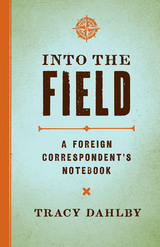 Into the Field: A Foreign Correspondent's Notebook
By Tracy Dahlby
University of Texas Press, 2014 Tracy Dahlby is an award-winning journalist who has reported internationally as a contributor to National Geographic magazine and served as a staff correspondent for Newsweek and the Washington Post. In this memoir of covering a far-flung swath of Asia, he takes readers behind the scenes to reveal “the stories behind the stories”—the legwork and (mis)adventures of a foreign correspondent on a mission to be the eyes and ears of people back home, helping them understand the forces and events that shape our world. Into the Field centers on the travel and reporting Dahlby did for a half-dozen pieces that ran in National Geographic. The book tours the South China Sea during China’s rise as a global power, visits Japan in a time of national midlife crisis, and explores Southeast Asia during periods of political transition and tumult. Dahlby’s vivid anecdotes of jousting with hardboiled sea captains, communing with rebellious tribal chieftains, enduring a spectacular shipboard insect attack, and talking his way into a far place or out of a tight spot offer aspiring foreign correspondents a realistic introduction to the challenges of the profession. Along the way, he provides practical advice about everything from successful travel planning to managing headstrong local fixers and dealing with circumstances that can range from friendly to formidable. A knowledgeable, entertaining how-to book for observing the world and making sense of events, Into the Field is a must-read for student journalists and armchair travelers alike.
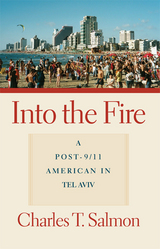 Into the Fire: A Post-9/11 American in Tel Aviv
Charles T. Salmon
Michigan State University Press, 2003 In the fall of 2001 Charles Salmon had a Fulbright fellowship in Israel. He was due to depart on September 12. Arriving in Israel a few weeks later, speaking no Hebrew and largely unfamiliar with Judaism and Israeli customs, he immersed himself in Israeli culture.
This collection of correspondence began as a weekly report to friends and was designed to offer an alternative to mainstream media. With the excitement of a tourist and the eagerness of an anthropologist, Salmon emerges as a modern Candide. He describes historical sites and a supermarket in Tel Aviv, discusses the differences between university students in Israel and America, and negotiates the purchase of food and the vagaries of the weather with humor and passion. The letters also discuss Israeli–Palestinian relations, and details terrorist events and responses to them.
This unique book focuses on how everyday hopes and fears transcend geopolitical boundaries and provides valuable lessons on how to thrive in these new and uncertain times.
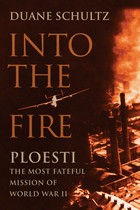 Into the Fire: Ploesti, the Most Fateful Mission of World War II
Duane Schultz
Westholme Publishing, 2007 A detailed and vivid account of the World War II disaster."—Booklist "Into the Fire shimmers with historical parallels and modern resonances. . . . Schultz combed an impressive body of material for this account." —Washington Times "This bittersweet tale of arrogance, wishful thinking, sacrifice, and heroism is recounted with grace and empathy." —Military.com "Schultz combines a historian's meticulous research and a novelist's hypnotic prose to produce this memorable popular history... Shultz's intimate account of this controversial episode is a timely reminder of the horrors of war and a moving tribute to Ploestl's heroes." —Publishers Weekly "We knew it was a disaster and knew that in the flames shooting up from those refineries we might be burned to death. But we went right in." —Lt. Norman Whalen "We were dragged through the mouth of hell."—from a Ploesti Mission debriefing report Planned by Winston Churchill, authorized by Dwight D. Eisenhower, and executed by five specially trained American bomber units, the attack on the oil refineries of Ploesti, Romania, was among the most daring and dangerous missions of World War II. If the raid succeeded, the Nazi war machine would suffer a devastating blow. On August 1, 1943, nearly two hundred B-24 bombers flew from Benghazi, North Africa, with directions to descend on Ploesti at treetop level, bomb the refineries, and return. The low-level bombers could evade enemy radar and were thought to be more difficult to shoot down. But despite warnings that a German heavy flak train had been moved into the area and that the secrecy of their mission had been compromised, the bombers were sent out. Minutes from the target, one of the commanders made a wrong turn, leading the formations away from Ploesti. Recovering from this mistake, most of the bombers relocated the refineries, but the mission was doomed. The ensuing air-ground battle claimed dozens of the bombers, and many of those that survived the ordeal were forced to ditch in the ocean or in remote areas due to lack of fuel or structural damage. In Into the Fire: Ploesti, The Most Fateful Mission of World War II, Duane Schultz re-creates this great battle, combining original research and interviews with survivors in order to capture the tension, drama, and heroics of the warring sides. More Medals of Honor were awarded for this mission than any other aerial combat enterprise in the history of the United States. But the medals are bittersweet testimony to the courage of the 1,726 young men who risked all on a fateful attempt to cut off the Nazi supply of "black gold.
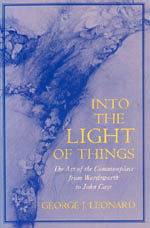 Into the Light of Things: The Art of the Commonplace from Wordsworth to John Cage
George J. Leonard
University of Chicago Press, 1994 In this sweeping revision of avant-garde history, John Cage takes his rightful place as Wordsworth's great and final heir. George Leonard traces a direct line back from Cage, Pop, and Conceptual Art through the Futurists to Whitman, Emerson, Ruskin, Carlyle, and Wordsworth, showing how the art of everyday objects, often thought an exclusively contemporary phenomenon, actually began as far back as 1800.
In recovering the links between such seemingly disparate figures, Leonard transforms our understanding of modern culture.
Selected by the American Library Association's journal, Choice, as "one of the Outstanding Academic Books of the Year"
"Leonard's book is a fine example of interdisciplinary studies. He shifts focus persuasively from art theory to literature to religious thought and biography, making his method seem the natural mode of inquiry into culture."—Kenneth Baker, San Francisco Chronicle Book Review
"Provocative and illuminating."—Library Journal
"Highly stimulating, impassioned."—Publisher's Weekly
"A rich and rewarding study written in a clear and accessible style with excellent references and a very useful index. Highly recommended."—Choice
 Into the Loop: An Ethnography of Compulsive Repetition
Samuele Collu
Duke University Press, 2026 Into the Loop asks how, and under what conditions, we can interrupt the repetitions that define us. Drawing from more than 200 hours of ethnographic observations of Systemic couples therapy in Buenos Aires, alongside auto-ethnographic recordings of Samuele Collu&’s own hypnotherapy sessions, this study traces the psychic forces that compel people to repeat, interrupt, or drift aside from relational loops. Grounding his analysis in affect theory, psychoanalysis, and phenomenology, Collu examines how identification, affective transmission, compulsive repetition, and hypnosis play out within therapeutic encounters observed by teams of psychotherapists through one-way mirrors and closed-circuit television systems. This focus on visual mediation reveals how screens and observational devices both capture and distort the therapeutic process itself—a dynamic that connects to broader questions about digital media and user-screen relations in contemporary society. Written in an experimental and literary style that moves fluidly between the academic, the personal, and their uncanny in-betweens, Into the Loop offers a unique window into the repetitive cycles that shape our most intimate relationships and the possibilities for transformation within them.
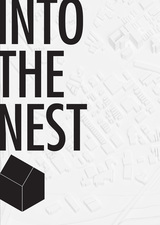 Into the Nest: Futures of Affordable Housing
Edited by the University of Cincinnati School of Architecture and Interior Design
University of Cincinnati Press, 2019 Access to affordable housing is one of the most pressing issues facing cities worldwide, as populations grow and real estate prices rise. But the question of what we mean by the term “affordable housing” is far from clear. Designers shy away from the concept, intimidated by the possibility of cheap materials or fast-paced designs, even as potential homeowners are drawn to the promise of elegance and beauty within a tight budget. Into the Nest brings together seventeen architecture students at the University of Cincinnati/DAAP to collaborate with NEWST, a not-for-profit developer that wanted to address the problem of affordable housing in the neighborhood of Northside Cincinnati. Together, they matched up demographic research combined with multiple design iterations to help move toward a definition of affordable housing that works for everyone and points a way toward future design and development.
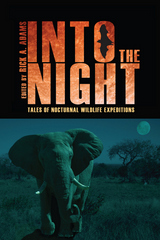 Into the Night
Rick Adams
University Press of Colorado, 2013 This entertaining collection of essays from professional scientists and naturalists provides an enlightening look at the lives of field biologists with a passion for the hidden world of nocturnal wildlife. Into the Night explores the harrowing, fascinating, amusing, and largely unheard personal experiences of scientists willing to forsake the safety of daylight to document the natural history of these uniquely adapted animals. Contributors tell of confronting North American bears, cougars, and rattlesnakes; suffering red ctenid spider bites in the tropical rain forest; swimming through layers of feeding-frenzied hammerhead sharks in the Galapagos; evading the wrath of African bull elephants in South Africa; and delighting in the curious and gentle nature of foxes and unconditional acceptance by a family of owls. They describe “fire in the sky” across a treeless tundra, a sea ablaze with bioluminescent algae, nighttime earthquakes on the Pacific Rim, and hurricanes and erupting volcanoes on a Caribbean island. Into the Night reveals rare and unexpected insights into nocturnal field research, illuminating experiences, discoveries, and challenges faced by intrepid biologists studying nature’s nightly marvels across the globe. This volume will be of interest to scientists and general readers alike.
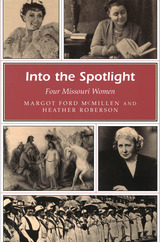 Into the Spotlight: Four Missouri Women
Margot Ford McMillen & Heather Roberson
University of Missouri Press, 2004 As a companion volume to their earlier book, Called to Courage: Four Women in Missouri History, Margot Ford McMillen and Heather Roberson’s Into the Spotlight provides the biographies of four more remarkable Missouri women. Although these women came from radically different circumstances, they all shared a common sense of purpose, determination, and courage, and each used her own unique position to empower herself and others
Sacred Sun, also called Mohongo, was a Native American of the Osage tribe in Missouri. In 1827, her people lost their land, their sacred places, and many of their traditions. Seeking answers to the dilemma faced by her people, and possibly aid from the French, she journeyed to Europe with a group of prominent Osage and a French entrepreneur. The harrowing events she experienced there would shape the woman she became when she returned to the Osage tribe, which had been forced to move to Oklahoma and was still struggling to survive.
Emily Newell Blair was born into a successful southwest Missouri family. Although she was born at a time when the contributions of women in the workforce were quite limited, she was encouraged by her family to get an education and expand her skills in writing and speaking. When women did begin to pursue education and careers, Blair was at the forefront, working tirelessly to secure voting rights for women. Eventually, she was elected to the Democratic National Committee and later poured her energy into organizing Democratic women’s clubs.
Josephine Baker grew up in segregated turn-of-the-century St. Louis society, which determined human worth by the color of one’s skin. Her mixed ethnic background left Baker feeling isolated both from her own black family and from white society. Driven to develop her own unique style, she became a star of song and stage, toured Europe, served as a spy, and was a fervent civil rights and antiracism activist.
Elizabeth Virginia Wallace, known to her family as “Bess,” grew up in one of Missouri’s most prominent families. She married a neighborhood boy—considered unacceptable by her mother—who would go on to become President Harry Truman. Bess Truman, called “the boss” by her husband, worked side by side with him, editing his speeches and providing advice and guidance through innumerable crises during and after World War II.
Into the Spotlight provides valuable new insights into Missouri and American history, as well as women’s history, and will be a welcome addition to the Missouri Heritage Readers Series.
Into the Story 2: More Stories! More Drama!
Carole Miller and Juliana Saxton
Intellect Books, 2016 Following the first collection of story drama structures, Into the Story 2: More Stories! More Drama! presents a well-argued approach to the value of children’s picture books as a way to look at contemporary issues of social justice while building connections that promote a literacy that is multi-dimensional. Story drama structures offer teachers opportunities for the rich conversations and deep reflections that foster habits of mind critical for life in the twenty-first century. This new volume, piloted internationally over the last decade, will become an invaluable resource for uncovering curricula in ways that are fresh and innovative for students and teachers of all levels.
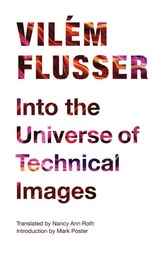 Into the Universe of Technical Images
Vilém Flusser
University of Minnesota Press, 2010 Poised between hope and despair for a humanity facing an urgent communication crisis, this work by Vilém Flusser forecasts either the first truly human, infinitely creative society in history or a society of unbearable, oppressive sameness, locked in a pattern it cannot change. First published in German in 1985 and now available in English for the first time, Into the Universe of Technical Images outlines the history of communication technology as a process of increasing abstraction.
Flusser charts how communication evolved from direct interaction with the world to mediation through various technologies. The invention of writing marked one significant shift; the invention of photography marked another, heralding the current age of the technical image. The automation of the processing of technical images carries both promise and threat: the promise of freeing humans to play and invent and the threat for networks of automation to proceed independently of humans.
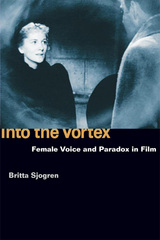 Into the Vortex: Female Voice and Paradox in Film
Britta Sjogren
University of Illinois Press, 2010 Into the Vortex challenges and rethinks feminist film theory's brilliant but often pessimistic reflections on the workings of sound and voice in film. Including close readings of major film theorists such as Kaja Silverman and Mary Ann Doane, Britta H. Sjogren offers an alternative to image-centered scenarios that dominate feminist film theory's critique of the representation of sexual difference.
Sjogren focuses on a rash of 1940s Hollywood films in which the female voice bears a marked formal presence to demonstrate the ways that the feminine is expressed and difference is sustained. She argues that these films capitalize on particular particular psychoanalytic, narratological and discursive contradictions to bring out and express difference, rather than to contain or close it down. Exploring the vigorous dynamic engendered by contradiction and paradox, Sjogren charts a way out of the pessimistic, monolithic view of patriarchy and cinema's representation of women's voices.
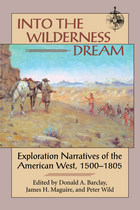 Into The Wilderness Dream
Donald A Barclay
University of Utah Press, 1994 Not just an exploration of our early Western European roots, these rich chronicles read as literature, first-person narratives of the greatest exploration adventures in historic times. From the Platonic vision of Atlantis to Arthur’s Avalon, pre-Columbus Europeans imagined fabulous lands to the west—and after 1492, initial reports of a new world filled with golden El Dorados, warrior queens, and Fountains of Youth merely provided confirmation. Although these dreams were soon tempered by reality, explorers continued to set off with expectation that shaped what they say, how they saw, and how they reacted. This complex of attitudes continues to affect the way we view our world, and these accounts provide an excellent source for insight into the metaphorical systems that have permeated European and American writing about the West since the Sixteenth century. Into the Wilderness Dreams draws from the best of three dozen accounts by the Spanish, French, English, and American explorers who came before Lewis and Clark, and explores the roots of present Western Euro-American culture.
 Into Woods
Bill Roorbach
University of Notre Dame Press, 2002 "Bill Roorbach has the remarkable gift of evoking one of the most likeable companions I have ever encountered in literature. In his essays, the reader finds a friend who enlivens the senses and the spirit. Here is a narrator who makes you glad to be alive, giddy to be in his presence, grateful to love friends and family and dogs with generosity and abandon, to show tenderness and thus be saved by strangers." --Melanie Rae Thon, author of First, Body and Sweet Hearts
Into Woods is an exuberant, profound, and often wonderfully funny account of ten years in the life of its award-winning author, Bill Roorbach. A paean to nature, to love, to family, and to place, Into Woods provides a sequel to Roorbach's first book, the critically acclaimed and popular Summers with Juliet, which traced Roorbach's courtship of Juliet Karelsen, ending with their wedding on the water. Into Woods begins with their honeymoon on a wine farm in the Loire Valley of France and closes with the birth of their new daughter and return to their beloved Maine. Thoroughly original, the essays of Into Woods blend journalism, memoir, personal narrative, nature writing, cultural criticism, and rare insight into a narrative of place, a meditation on being and belonging, love and death, wonder and foreboding.
The title essay, "Into Woods," is a portrait of the writer as a young man; it is also a hymn to work and men. This evocative essay sets the theme for the rest of the collection. "Spirits," "Shitdiggers, Mudflats, and the Worm Men of Maine," "Duck Day Afternoon," "Birthday," and "Sky Pond" all pay homage to Bill's life in Maine. "You Have Given This Boy Life," perhaps the most haunting essay in the collection, describes Bill's middle-aged preoccupation with death, leading to a strange catalogue of cadavers, but no deliverance from fear. "Vortex," a lovely reprise of the subjects of Summers with Juliet, is all about fishing on Martha's Vineyard. "Scioto Blues" is the unforgettable tale of Bill's walks with his dogs along the trash-infested Scioto River, as it flows through Columbus, Ohio. With his characteristic wit, Bill narrates the funk and glory of a place that somehow manages to keep its dignity despite all of the degradation. Finally, "My Life as a Move" discusses the pervasive American move-for-work phenomenon, cataloguing Bill's own numerous moves and his and Juliet's decision to move back to Maine, where they hope they belong.
Bill Roorbach, a 2002 NEA Fellow, is the author of four previous books, including a Flannery O'Connor Award winning collection of stories, BIG BEND, and a novel, THE SMALLEST COLOR. A sixth book, TEMPLE STREAM, will appear in 2003 from Random House imprint Dial Press. Earlier books are SUMMERS WITH JULIET, and WRITING LIFE STORIES. Bill is also the editor of the Oxford anthology THE ART OF TRUTH. Bill's short work has appeared in The Atlantic, Harper's, Granta, The New York Times Magazine, and dozens of other magazines and journals, and has been featured on the NPR program "Selected Shorts." He has taught in the MFA writing program at Ohio State, as well as at the University of Maine at Farmington, the University of Vermont, and Colby College.
----------
"Roorbach's writing continues to be that freewheeling mixture of nature writing, personal detail, humor, philosophy, and social commentary that makes his personal essays unique." --Library Journal, 2/15/02
"It takes a fairly bold individual to feel that what they have to write about it worth somebody else's effort to read. It takes even more cockiness to believe somebody wants to read about you and your travails. Bill Roorbach is just such a cocky individual, and his writing backs up the cockiness. He writes with wit, self-depracation, and the wisdom of somebody who has observed for a living for nearly five decades." --Dan Wickett, online review
"The range of subject matter in this collection is impressive: Fans of nonfiction will surely find at least one essay-and probably many more-that interest, enlighten, and entertain them. Few writers today are capable of bridging the cultural divide that separates those who work with their hands from those who work with their heads; Into Woods does it in style. Into Woods is a trip of discovering one pleasure after another." --Bangor Daily News, April 1, 2002
"This collection of 11 lyrical and humorous essays details Roorbach's search for the right part of country to live in, for meaningful work, for that one place in this increasingly mobile society that indubitably feels like home ... pace your reading of the book, the better to savor the exuberance, to give yourself up to the joy." --Chicago Tribune, May 1, 2002 (also ran in Detroit Free Press and Lynchburg News & Daily Advance--Lynchburg, VA)
"Roorbach knows how to mine personal anecdotes for deeper truths without seeming to preach. And he keeps things engaging as he writes about subjects as diverse as his honeymoon in France and the task of digging for worms. . . . Into Woods offers an entertaining self-portrait of a man who lives his life well, and might provoke readers to review their own priorities." --Minneapolis Star Tribune, June 2, 2002
"Writing and working move about one another in this collection in intriguing ways. [T]hese essays tell the story of a man fiercely dedicated to carving his existence out of his own thoughts, yet living that life in cahoots with the natural world. To call Roorbach a modern day Thoreau might be overstatement, but it's not far from the truth." --The Portland Phoenix, April 18-25, 2002 (Also ran in Ft. Lauderdale Sun-Sentinel--Ft. Lauderdale, FL)
"If you follow Roorbach--as I recommend you do--into one of his joyous, self-mocking, funny, bring-the-dogs-along, old-clothes, scavenger-hunt essays--some of which are also sad, strange and grittily real, you can hardly be disappointed in the company. His appealing, casual tone is part barstool tale, part letter-from-a-friend, part goofy kid in awe of the world's weird treasures. Whatever pristine or not-so-pristine place Roorbach takes us in his essays, he's willing to bring along a sack full of humility, honesty, love of life and undaunted joy. His sense of discovery is infectious.... Into Woods easily makes my short list of looking-for-the-good-life books set in Maine, or anywhere for that matter." --Maine Times, April 18, 2002
"This collection of 11 lyrical and humorous essays details Roorbach's search for the right part of the country to live in, for meaningful work, for that one place in this increasingly mobile society that indubitably feels like home. Roorbach's considerable skill at evoking a sense of place shines through these essays.... Roorbach is a master at capturing and expressing joy. [P]ace your reading of the book, the better to savor the exuberance, to give yourself up to the joy." --Hartford Courant, April 21, 2002
"Roorbach's new book provides uniterrupted reading pleasure. Roorbach has been many things in his working life--cowboy, carpenter, plumber, bartender, teacher--but we should be glad he is also a writer, for he turns out provocative tales and creative essays that actually make us think. There is wit, sadness, humor, inspiration, and gentle warmth in all these essays." --Waterville Sentinel (Waterville, Maine) and Kennebec Journal (Augusta, Maine), February 17, 2002
"These essays are unified by Roorbach's passionate interest in his surroundings. One can't help but want to splash along beside him, sending the ducks skyward and routing out the simple treasures the neighborhood has to offer." --Rain Taxi, June 2002
"An earthy and disarmingly honest blend of humor, travelogue, social observation and commentary--and a dash of philosophy and hearty helping of wit, to boot. Into Woods is like a fine, robust wine, best served in sips so its full flavor can be appreciated." --Dayton Daily News, June 30, 2002
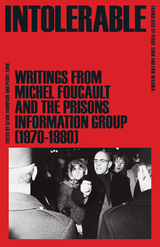 Intolerable: Writings from Michel Foucault and the Prisons Information Group (1970–1980)
Michel Foucault
University of Minnesota Press, 2020 A groundbreaking collection of writings by Michel Foucault and the Prisons Information Group documenting their efforts to expose France’s inhumane treatment of prisoners
Founded by Michel Foucault and others in 1970–71, the Prisons Information Group (GIP) circulated information about the inhumane conditions within the French prison system. Intolerable makes available for the first time in English a fully annotated compilation of materials produced by the GIP during its brief but influential existence, including an exclusive new interview with GIP member Hélène Cixous and writings by Gilles Deleuze and Jean Genet. These archival documents—public announcements, manifestos, reports, pamphlets, interventions, press conference statements, interviews, and round table discussions—trace the GIP’s establishment in post-1968 political turmoil, the new models of social activism it pioneered, the prison revolts it supported across France, and the retrospective assessments that followed its denouement. At the same time, Intolerable offers a rich, concrete exploration of Foucault’s concept of resistance, providing a new understanding of the arc of his intellectual development and the genesis of his most influential book, Discipline and Punish. Presenting the account of France’s most vibrant prison resistance movement in its own words and on its own terms, this significant and relevant collection also connects the approach and activities of the GIP to radical prison resistance movements today.
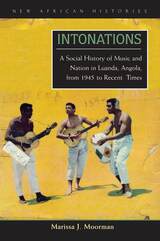 Intonations: A Social History of Music and Nation in Luanda, Angola, from 1945 to Recent Times
Marissa J. Moorman
Ohio University Press, 2008 Intonations tells the story of how Angola’s urban residents in the late colonial period (roughly 1945–74) used music to talk back to their colonial oppressors and, more importantly, to define what it meant to be Angolan and what they hoped to gain from independence. A compilation of Angolan music is included in CD format. Marissa J. Moorman presents a social and cultural history of the relationship between Angolan culture and politics. She argues that it was in and through popular urban music, produced mainly in the musseques (urban shantytowns) of the capital city, Luanda, that Angolans forged the nation and developed expectations about nationalism. Through careful archival work and extensive interviews with musicians and those who attended performances in bars, community centers, and cinemas, Moorman explores the ways in which the urban poor imagined the nation. The spread of radio technology and the establishment of a recording industry in the early 1970s reterritorialized an urban-produced sound and cultural ethos by transporting music throughout the country. When the formerly exiled independent movements returned to Angola in 1975, they found a population receptive to their nationalist message but with different expectations about the promises of independence. In producing and consuming music, Angolans formed a new image of independence and nationalist politics.
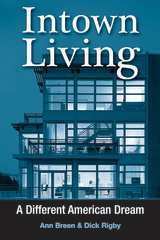 Intown Living: A Different American Dream
Ann Breen and Dick Rigby
Island Press, 2005 After decades of abandonment, cities across North America are experiencing a renaissance. A new generation is seeking greater excitement and diversity than the typical suburban subdivision offers and many people are instead looking to make their homes in lively urban environments.
In Intown Living, authors Ann Breen and Dick Rigby document this movement, arguing that if properly nurtured, it could help slow current patterns of sprawling development and help revitalize America's cities. They illustrate the many benefits of city living and offer strategies and encouragement for public officials and private developers to team up and expand central city housing opportunities.
The authors present in-depth studies of eight cities--Atlanta; Dallas; Houston; Memphis; Minneapolis; New Orleans; Portland, Oregon; and Vancouver, British Columbia--that are experiencing this type of renaissance, and consider common elements shared by the cities, as well as their differences.
Intown Living is an important new resource for a wide audience of professionals involved with urban design and planning. It will also be of interest to the many people concerned with historic preservation or smart growth, and for students and researchers involved with urban studies and related fields.
 Intoxicated: Race, Disability, and Chemical Intimacy across Empire
Mel Y. Chen
Duke University Press, 2023 In Intoxicated Mel Y. Chen explores the ongoing imperial relationship between race, sexuality, and disability. They focus on nineteenth-century biopolitical archives in England and Australia to show how mutual entanglements of race and disability take form through toxicity. Examining English scientist John Langdon Down’s characterization of white intellectual disability as Asian interiority and Queensland’s racialization and targeting of Aboriginal peoples through its ostensible concern with black opium, Chen explores how the colonial administration of race and disability gives rise to “intoxicated” subjects often shadowed by slowness. Chen charts the ongoing reverberations of these chemical entanglements in art and contemporary moments of political and economic conflict or agitation. Although intoxicated subjects may be affected by ongoing pollution or discredited as agents of failure, Chen affirmatively identifies queer/crip forms of unlearning and worldmaking under imperialism. Exemplifying an undisciplined thinking that resists linear or accretive methods of inquiry, Chen unsettles conventional understandings of slowness and agitation, intellectual method, and the toxic ordinary.
 Intoxicated Ways of Knowing: The Untold Story of Intoxicants and the Biological Subject in Nineteenth-Century Germany
Matthew Perkins-McVey
University of Chicago Press, 2026 Argues that intoxication was fundamental to German physiological, psychological, and psychiatric research during the nineteenth century.
Intoxicating substances can be found lurking in every corner of modern life, and Matthew Perkins-McVey’s pathbreaking book offers the untold story of how they were implicated in shifting perceptions of embodiment found in the emerging sciences of the body and mind in late-nineteenth-century Germany. Their use in this experimental context gave rise to a dynamic conception of the subject within the scientific, psychological, philosophical, and sociological milieu of the era. The history of the modern biological subject, Perkins-McVey argues, turns on “intoxicated ways of knowing.”
Intoxicated Ways of Knowing identifies the state of intoxication as a tacit form of thinking and knowing with the body. Intoxicants force us to feel, intervening directly in our perceptional awareness, and, Perkins-McVey contends, they bring latent conceptual associations into the foreground of conscious thought, engendering new ways of knowing the world. The book unfurls how intoxicants affected nineteenth-century German science and how, ultimately, the connection between mental life and intoxication is taken up in the works of Friedrich Nietzsche, Max Weber, and Sigmund Freud, bringing the biological subject out of the lab and into the worlds of philosophy, psychoanalysis, sociology, and politics.
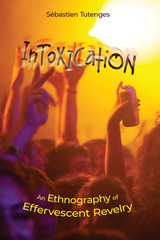 Intoxication: An Ethnography of Effervescent Revelry
Sébastien Tutenges
Rutgers University Press, 2023 For two decades, Sébastien Tutenges has conducted research in bars, nightclubs, festivals, drug dens, nightlife resorts, and underground dance parties in a quest to answer a fundamental question: Why do people across cultures gather regularly to intoxicate themselves? Vivid and at times deeply personal, this book offers new insights into a wide variety of intoxicating experiences, from the intimate feeling of connection among concertgoers to the adrenaline-fueled rush of a fight, to the thrill of jumping off a balcony into a swimming pool. Tutenges shows what it means and feels to move beyond the ordinary into altered states in which the transgressive, spectacular, and unexpected take place. He argues that the primary aim of group intoxication is the religious experience that Émile Durkheim calls collective effervescence, the essence of which is a sense of connecting with other people and being part of a larger whole. This experience is empowering and emboldening and may lead to crime and deviance, but it is at the same time vital to our humanity because it strengthens social bonds and solidarity. The book fills important gaps in Durkheim’s social theory and contributes to current debates in micro-sociology as well as cultural criminology and cultural sociology. Here, for the first time, readers will discover a detailed account of collective effervescence in contemporary society that includes: an explanation of what collective effervescence is; a description of the conditions that generate collective effervescence; a typology of the varieties of collective effervescence; a discussion of how collective effervescence manifests in the realm of nightlife, politics, sports, and religion; and an analysis of how commercial forces amplify and capitalize on the universal human need for intoxication. This book is also freely available online as an open access digital edition. Download the open access ebook here.
The Intoxication of Destruction in Theory, Culture and Media: A Philosophy of Expenditure after Georges Bataille
Erin K. Stapleton
Amsterdam University Press, 2022 This book examines the desire for, and intoxication with destruction as it appears in cultural objects and representation, arguing that all cultural and aesthetic value is fundamentally predicated on its own fragility, as well as the living transience of those who make and encounter it. Beginning with a philosophy of expenditure after Georges Bataille, each chapter maps different operations of destruction in media and culture. These operations are expressed and located in representations of human extinction and explosive architecture, in execution and in eroticism, and in media and digital archives, which constitute a further destabilization of the notion of destruction in the dynamic between aspirational immortality and material volatility embedded in the archival systems of digital cultures.
 Intractable Disputes about the Natural Law: Alasdair MacIntyre and Critics
Lawrence S. Cunningham
University of Notre Dame Press, 2009
Both as cardinal and as Pope Benedict XVI, one of Josef Ratzinger's consistent concerns has been the foundational moral imperatives of the natural law. In 2004, then Cardinal Ratzinger requested that the University of Notre Dame study the complex issues embedded in discussions about "natural rights" and "natural law" in the context of Catholic thinking. To that end, Alasdair MacIntyre provided a substantive essay on the foundational problem of moral disagreements concerning natural law, and eight scholars were invited to respond to MacIntyre's essay, either by addressing his work directly or by amplifying his argument along other yet similar paths. The contributors to this volume are theologians, philosophers, civil and canon lawyers, and political scientists, who reflect on these issues from different disciplinary perspectives. Once the contributors' essays were completed, MacIntyre responded with a closing essay.
Throughout the book, the contributors ask: Can a persuasive case for a foundational morality be made etsi Deus daretur (as if God did not exist)? And, of course, persuasive to whom? The exchanges that take place between MacIntyre and his interlocutors result, not in answers, but in rigorous attempts at clarification. Intractable Disputes about the Natural Law will interest ethicists, moral theologians, and students and scholars of moral philosophy.
"Lawrence Cunningham has assembled an esteemed group of scholars to provide incisive analyses of the contemporary state of natural law theory, particularly in light of Alasdair MacIntyre's groundbreaking work. The essays are lucid, engaging, and intellectually sophisticated. Intractable Disputes about the Natural Lawis a must-read not only for moral theologians, but for anyone concerned about the conceptual foundations of human rights, human dignity, and moral dialogue in pluralistic societies." --Stephen J. Pope, Boston College
"MacIntyre's first essay, on its own, would make this book an important scholarly contribution. But the ensuing contributions enable the book to flourish further, with contributions on subjects both readily associated with natural law and moral disagreement (for example, common morality, human rights, and rival visions of virtue) as well as those more creatively connected to the genesis of the text (sacramental life, interreligious dialogue, and modes of moral discourse). Cunningham's volume both broadens and deepens contemporary thinking on a perennial topic, and will richly reward its readers." --William C. Mattison III, The Catholic University of America
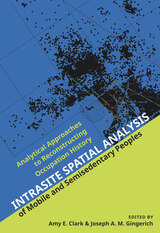 Intrasite Spatial Analysis of Mobile and Semisedentary Peoples: Analytical Approaches to Reconstructing Occupation History
Edited by Amy E. Clark and Joseph A. M. Gingerich
University of Utah Press, 2022 Describing the nature and meaning of artifact spatial patterning can be highly subjective, yet many patterns can be quantified to create general models that are comparable across time periods and geographic space. The authors employ various techniques in this endeavor, including large sample sizes, model-driven analyses of the ethnographic record, bone and lithic refitting, and a careful consideration of artifact attributes that elucidate spatial patterning. Such detailed analyses allow archaeologists to better interpret site formation processes and address large-scale anthropological questions.
This volume includes studies that span archaeological and ethnographic contexts, from highly mobile Paleoindian foragers to semi-sedentary preagriculturalists of the Epipaleolithic and modern pastoralists in Mongolia. The authors hold that commonalities in human behavior lead to similar patterns in the organization and maintenance of space by people. They present a series of ideas and approaches to make it easier to recognize universals in human behaviors, which allow archaeologists to better compare intrasite spatial patterns. The book creates a baseline for new intrasite spatial analyses in the twenty-first century.
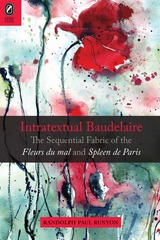 Intratextual Baudelaire: The Sequential Fabric of the Fleurs du mal and Spleen de Paris
Randolph Paul Runyon
Ohio State University Press, 2010 Intratextual Baudelaire: The Sequential Fabric of the Fleurs du mal and Spleen de Paris by Randolph Paul Runyon provides a new and provocative answer to the question that has intrigued readers for years: did the poet arrange the Fleurs du mal in a meaningful order? Runyon believes so, but not in the way most have conceived the question.
Barbey d’Aurevilly’s claim that there was a “secret architecture” hidden in the Fleurs has long misled scholars by leading them to look for some overarching hierarchical organization, when they should have been looking for how the poems actually fit together, each to each, in the sequential fabric of the text. This is what Runyon has done, in a meticulous reading of every poem and its place in the sequence. Intratextual Baudelaire provides the most thorough analysis available of the textual changes Baudelaire made between the first and second editions and shows why he made them: so that the sequential structure would be preserved despite the addition of new poems and the deletion of those judged obscene.
Extending his analysis to the Spleen de Paris with the same attention to detail and awareness of textual changes, Runyon shows that Baudelaire’s prose-poem collection displays the same rigorous sequential structure. Both collections are revealed as marvels of self-referential intratextuality. Whether one agrees with Runyon or not, Intratextual Baudelaire will certainly generate discussion among French studies scholars.
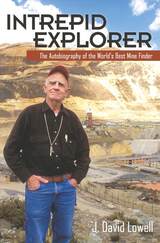 Intrepid Explorer: The Autobiography of the World's Best Mine Finder
J. David Lowell
University of Arizona Press, 2014 When seven-year-old Dave Lowell was camped out at his father’s mine in the hills of southern Arizona in 1935, he knew he had found his calling. “Life couldn’t get any better than this,” he recalls. “I didn’t know what science was, but wisps of scientific thought were already working into my plan.” So began the legendary career of the engineer, geologist, explorer, and international businessman whose life is recounted in his own words in this captivating book.
An Arizona native with family roots in territorial times, Lowell grew from modest beginnings on a ranch near Nogales to become a major world figure in the fields of minerals, mining, and economic geology. He has personally discovered more copper than anyone in history and has developed multibillion-dollar gold and copper mines that have changed the economies of nations. And although he has consulted for corporations in the field of mining, he has largely operated as an independent agent and explorer, the architect of his own path and success.
His life’s story unfolds in four stages: his early education in his field, on-the-job learning at sites in the United States and Mexico, development of exploration strategies, and finally, the launch of his own enterprises and companies. Recurring themes in Lowell’s life include the strict personal, ethical, and tactical policies he requires of his colleagues; his devotion to his family; and his distaste for being away from the field in a corporate office, even to this day. The magnitude of Lowell’s overall success is evident in his list of mine discoveries, as well as in his scientific achievements and the enormous respect his friends and colleagues have had for him throughout his lengthy career, which he continues to zealously pursue.
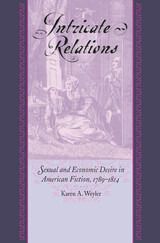 Intricate Relations: Sexual and Economic Desire in American Fiction, 1789-1814
Karen A. Weyler
University of Iowa Press, 2005 Intricate Relations charts the development of the novel in and beyond the early republic in relation to these two thematic and intricately connected centers: sexuality and economics. By reading fiction written by Americans between 1789 and 1814 alongside medical theory, political and economic tracts, and pedagogical literature of all kinds, Karen Weyler recreates and illuminates the larger, sometimes opaque, cultural context in which novels were written, published, and read. In 1799, the novelist Charles Brockden Brown used the evocative phrase “intricate relations” to describe the complex imbrication of sexual and economic relations in the early republic. Exploring these relationships, he argued, is the chief job of the “moral historian,” a label that most novelists of the era embraced. In a republic anxious about burgeoning individualism in the 1790s and the first two decades of the nineteenth century, the novel foregrounded sexual and economic desires and explored ways to regulate the manner in which they were expressed and gratified. In Intricate Relations, Weyler argues that understanding how these issues underlie the novel as a genre is fundamental to understanding both the novels themselves and their role in American literary culture. Situating fiction amid other popular genres illuminates how novelists such as Charles Brockden Brown, Hannah Foster, Samuel Relf, Susanna Rowson, Rebecca Rush, and Sally Wood synthesized and iterated many of the concerns expressed in other forms of public discourse, a strategy that helped legitimate their chosen genre and make it a viable venue for discussion in the decades following the revolution. Weyler’s passionate and persuasive study offers new insights into the civic role of fiction in the early republic and will be of great interest to literary theorists and scholars in women’s and American studies.
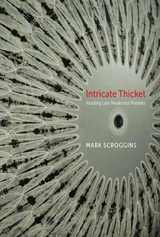 Intricate Thicket: Reading Late Modernist Poetries
Mark Scroggins
University of Alabama Press, 2015 In Intricate Thicket: Reading Late Modernist Poetries, Mark Scroggins writes with wit and dash about a fascinating range of key twentieth- and twenty-first-century poets and writers. In nineteen lively and accessible essays, he persuasively argues that the innovations of modernist verse were not replaced by postmodernism, but rather those innovations continue to infuse contemporary writing and poetry with intellectual and aesthetic richness.
In these essays, Scroggins reviews the legacy of Louis Zukofsky, delineates the exceptional influence of the Black Mountain poets, and provides close readings of a wealth of examples of poetic works from poets who have carried the modernist legacy into contemporary poetry. He traces with an insider’s keen observation the careers of many of the most dynamic, innovative, and celebrated poets of the past half-century, among them Ian Hamilton Finlay, Ronald Johnson, Rae Armantrout, Harryette Mullen, and Anne Carson.
In a concluding pair of essays, Scroggins situates his own practice within the broad currents he has described. He reflects on his own aesthetics as a contemporary poet and, drawing on his extensive study and writing about Louis Zukofsky, examines the practical and theoretical challenges of literary biography.
While the core of these essays is the interpretation of poetry, Scroggins also offers clear aesthetic evaluations of the successes and failures of the poetries he examines. Scroggins engages with complex and challenging works, and yet his highly accessible descriptions and criticisms avoid theoretical entanglements and specialized jargon. Intricate Thicket yields subtle and multifaceted insights to experts and newcomers alike.
 Intrinsic Factors: William Bosworth Castle and the Development of Hematology and Clinical Investigation at Boston City Hospital
Anand B. Karnad
Harvard University Press Dr. W. B. Castle (1897–1990), who played a major role in the emergence of hematology as a scientific discipline in the first half of this century, was instrumental in establishing the worldwide reputation of the Thorndike Memorial Laboratory and the Harvard Medical Unit at Boston City Hospital. In the first comprehensive biography of Castle, Anand Karnad highlights the golden age of medicine and hematology in Boston. Castle’s early experiments solved the puzzle of pernicious anemia and were the building blocks for a series of experiments on that disease that stand as one of the finest examples of clinical research ever conducted.
Castle and his group also made pioneering contributions to hemoglobin physiology, mechanisms of hemolysis, splenic function, and sickle cell anemia. Under his leadership, the Thorndike Memorial Laboratory attracted the best and the brightest talent, many of whom are present-day leaders in the world of medicine and science. Intrinsic Factors is the story of Castle’s life and work.
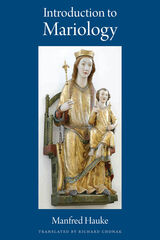 Introducation to Mariology
Manfred Hauke
Catholic University of America Press, 2020 In Introduction to Mariology, Fr. Manfred Hauke provides a synthesis of Mariology and the biblical fundaments and development of Marian doctrine. While it works as a comprehensive introduction suitable for courses on the subject, it is in reality a panoramic view on the entire Marian doctrine, and as such will be essential for the theological formation of seminarians, priests, theologians, and all kinds of educated Catholics. With an unparalleled bibliographic citation of Marian literature across a dozen languages, it is also a perfect gateway to further research on the subject.
It begins with Biblical doctrine, which is important especially for the dialogue with Protestant denominations: Catholic Mariology can be traced in its “embryonic” state already in Holy Scripture. From there Hauke presents a historical overview of the whole development of Marian doctrine, before developing further historical details in the subsequent chapters dedicated to systematic issues. The first systematic step approaches the figure of Mary through her role in the mystery of the Covenant between God and redeemed humanity; her being “Mother of God” and companion of the Redeemer is the “fundamental principle.” Then the four established Marian dogmas are presented: divine maternity, virginity, Immaculate Conception (in a chapter on Mary’s holiness more broadly), and bodily Assumption. A close look is given to maternal mediation which includes a part dedicated to the “Mater Unitatis”. A stand alone chapter is dedicated to Marian apparitions; authentic apparitions are presented as a part of prophetic charisma. The last chapter presents the basics on Marian devotion which culminates in the consecration to Mary (as a response to her maternal mediation).
Already available in Spanish, Italian, Portugese, and Korean, this landmark work is published here for the first time in English.
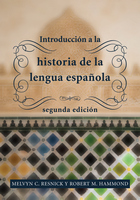 Introducción a la historia de la lengua española: segunda edición
Melvyn C. Resnick and Robert M. Hammond
Georgetown University Press, 2015 Introducción a la historia de la lengua española es una introducción completa a la historia externa e interna de la lengua española desde sus orígenes indoeuropeos hasta la lengua moderna de más de 400 millones de personas. Los autores escudriñan los cambios fonológicos, morfológicos, sintácticos semánticos y léxicos que caracterizan la evolución de la lengua española desde sus orígenes latinos. El foco de este libro es el español moderno. Los autores abordan cuestiones tan fundamentales como: ¿De dónde proviene el español? ¿Cómo llegó a ser la lengua que conocemos hoy en día? ¿Cómo se relaciona genética y culturalmente con los demás lenguas romances y a las lenguas no romances? ¿Cuáles son los efectos del bilingüismo en las áreas donde el español coexiste con otras lenguas? La segunda edición incluye numerosos ejercicios, una sección de preguntas de repaso al final de cada capítulo, y una extensa bibliografía. El libro está actualizado y ampliado en gran medida en el alcance y profundidad; sin embargo, respeta y conserva la estructura y el enfoque pedagógicos de la primera edición para el uso con los estudiantes que no tienen conocimientos previos en la lingüística. En los cursos avanzados y de posgrado, el programa puede incorporar asignaciones adicionales y secciones, incluyendo la opción "Temas y datos adicionales" que acompañan a cada capítulo.
 Introducción a la historia de la lengua española: segunda edición
Melvyn C. Resnick and Robert M. Hammond
Georgetown University Press, 2015 Introducción a la historia de la lengua española is a comprehensive introduction to the internal and external history of the Spanish language from its Indo-European ancestry to the present-day language of over 400 million people. The authors examine the phonological, morphological, syntactic, semantic, and lexical changes that characterize the evolution of Spanish from its Latin origins. But Spanish has not evolved in isolation in its spread across Spain and to Africa, the Americas, Asia, and islands of the Pacific Ocean. The foreign, sociological, and political influences that contribute to the uniqueness, diversity, and unity of a world language are essential aspects of the study of its history. The focus of this book is modern Spanish. The authors address such fundamental questions as: Where does Spanish come from? How did it become the language we know today? How is it related genetically and culturally to other Romance and non-Romance languages? What are the effects of bilingualism in areas where Spanish coexists with other languages? Introducción a la historia de la lengua española includes numerous exercises, a section of study questions at the end of each chapter, and an extensive bibliography. The second edition is updated and greatly expanded in scope and depth, yet it carefully maintains the structure and pedagogical approach of the first edition for use with students who have no prior background in linguistics. In advanced and graduate-level courses, the syllabus can incorporate additional assignments and sections, including the optional “Temas y datos adicionales” that accompany each chapter.
Introducción a la Traductología
Gerardo Vázquez-Ayora
Georgetown University Press, 1977 Introduccion a la Traductologia integrates the theoretical and practical aspects of translation.
Introducing a New Economics: Pluralist, Sustainable and Progressive
Jack Reardon, Maria Alejandra Caporale Madi and Molly Scott Cato
Pluto Press, 2015 Students and lecturers worldwide increasingly reject the narrow curricula and lack of intellectual diversity that characterize mainstream economics. They demand that the real world should be brought back into the classroom in order to most effectively confront current crises. Introducing a New Economics is a groundbreaking textbook that heralds this revolution in the teaching of economics. With a firm commitment to theoretical, methodological, and disciplinary pluralism, the authors challenge the institutional education hegemony head on. This unique textbook reflects a new ethos of economics teaching that highlights sustainability and justice through its discussion of work, employment, power, capital, markets, money, and debt. A progressive work, it will set the standard for the growing heterodox economics movement for years to come.
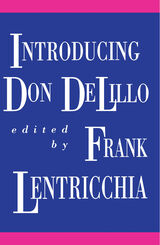 Introducing Don DeLillo
Frank Lentricchia
Duke University Press, 1991 If you want to find out what a rock critic, a syndicated columnist, and scholars of American literature have to say about one of America’s most important contemporary novelists, turn to Introducing Don DeLillo. Placing the author’s work in a cultural context, this is the first book-length collection on DeLillo, adding considerably to the emerging critical discourse on his work. Diversity is the key to this striking assemblage of cultural criticism edited by Frank Lentricchia. Special features include an expanded version of the Rolling Stone interview with the author (“An Outsider in this Society”) and the extraordinary tenth chapter of DeLillo’s Ratner’s Star. Accessibly written and entertaining, the collection will be of great interest to both students and scholars of contemporary American literature as well as to general readers interested in DeLillo’s work. Contributors. Frank Lentricchia, Anthony Decurtis, Daniel Aaron, Hal Crowther, John A. McClure, Eugene Goodheart, Charles Molesworth, Dennis A. Foster, and John Frow
 Introducing Don DeLillo
Frank Lentricchia
Duke University Press If you want to find out what a rock critic, a syndicated columnist, and scholars of American literature have to say about one of America’s most important contemporary novelists, turn to Introducing Don DeLillo. Placing the author’s work in a cultural context, this is the first book-length collection on DeLillo, adding considerably to the emerging critical discourse on his work. Diversity is the key to this striking assemblage of cultural criticism edited by Frank Lentricchia. Special features include an expanded version of the Rolling Stone interview with the author (“An Outsider in this Society”) and the extraordinary tenth chapter of DeLillo’s Ratner’s Star. Accessibly written and entertaining, the collection will be of great interest to both students and scholars of contemporary American literature as well as to general readers interested in DeLillo’s work. Contributors. Frank Lentricchia, Anthony Decurtis, Daniel Aaron, Hal Crowther, John A. McClure, Eugene Goodheart, Charles Molesworth, Dennis A. Foster, and John Frow
Introducing English: Essays in the Intellectual Work of Composition
James Slevin
University of Pittsburgh Press, 2001 James Slevin traces how composition emerged for him not as a vehicle for improving student writing, but rather as a way of working collaboratively with students to interpret educational practices and work for educational reform.
Introducing Linguistic Morphology: Second Edition
Laurie Bauer
Georgetown University Press, 2003 A newly expanded and updated edition of one of the best-selling introductions to linguistic morphology—the study and description of word formations in languages—that deals with inflection, derivation, and compounding, the system of word-forming elements and processes in a language. Basic concepts are introduced, with an abundance of examples from a range of familiar and exotic languages, followed by a discussion of, among other topics, the definition of word-form, productivity, inflection versus derivation, and the position of morphology to phonology—the science of speech sounds, especially the history and theory of sound changes in a language. Along with two new chapters discussing morphology and the brain and how morphology arises, changes, and disappears, this new edition includes exercises and a glossary of key terms.
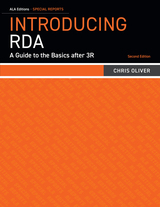 Introducing RDA: A Guide To The Basics After 3R
Chris Oliver
American Library Association, 2021 Since Oliver’s guide was first published in 2010, thousands of LIS students, records managers, and catalogers and other library professionals have relied on its clear, plainspoken explanation of RDA: Resource Description and Access as their first step towards becoming acquainted with the cataloging standard. Now, reflecting the changes to RDA after the completion of the 3R Project, Oliver brings her Special Report up to date. This essential primer - concisely explains what RDA is, its basic features, and the main factors in its development;
- describes RDA’s relationship to the international standards and models that continue to influence its evolution;
- provides an overview of the latest developments, focusing on the impact of the 3R Project, the results of aligning RDA with IFLA’s Library Reference Model (LRM), and the outcomes of internationalization;
- illustrates how information is organized in the post 3R Toolkit and explains how to navigate through this new structure; and
- discusses how RDA continues to enable improved resource discovery both in traditional and new applications, including the linked data environment.
Introducing Swedenborg: Correspondences
Gary Lachman
Swedenborg Foundation Publishers, 2021 Emanuel Swedenborg’s system of correspondences is one of the most influential theories in the history of ideas. Instrumental in the rise of Romanticism, Symbolism and Modernism, and cited as key to the work of Goethe, R.W. Emerson, Honoré de Balzac, Charles Baudelaire, Wassily Kandinsky and Arnold Schoenberg, to name but a few, it offers to poets, artists, writers and composers a blueprint for navigating the gap between the material world and non-material values. In this brief introduction, Gary Lachman gives an accessible overview of the many fascinating ways in which Swedenborg’s idea has impacted upon the past 250 years.
The Introduction of the Ironclad Warship
James Phinney Baxter, 3rd
Harvard University Press By 1860 the death-knell of the old wooden battleship had sounded; and when the news of the combat of the Monitor and the Merrimack crossed the Atlantic, nearly one hundred armored vessels were already built, building, or authorized in Europe. This sudden transformation of the European navies engendered a series of war scares and contributed in large measure to the breakdown of the entente cordiale between England and France. The material here first published throws fresh light on the diplomacy of the fifties and early sixties, and illustrates in striking fashion the cost of naval rivalry in terms of international suspicion. Professor Baxter’s chapters will accordingly be of deep interest to all students of diplomatic history as well as of naval history and naval architecture.
Introduction to Adaptive Arrays
Robert A. Monzingo
The Institution of Engineering and Technology, 2011 This second edition is an extensive modernization of the bestselling introduction to the subject of adaptive array sensor systems. With the number of applications of adaptive array sensor systems growing each year, this look at the principles and fundamental techniques that are critical to these systems is more important than ever before.
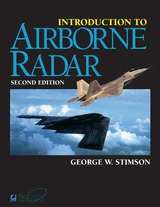 Introduction to Airborne Radar
Geroge W. Stimson
The Institution of Engineering and Technology, 1998 Introduction to Airborne Radar is the revision of the classic book privately published by Hughes Aircraft Company in 1983. Lavishly produced in full color, the book was quite unlike any commercially published radar book produced by the major technical publishers. The combination of clear, understandable writing and the unparalleled illustrations established the text-reference as a 'must-have' for engineers, technicians, pilots, and even sales and marketing people within the radar and aerospace industry. The book was authored by veteran Hughes engineer and Technical Manager George W. Stimson, a publications specialist. Individual chapters were thoroughly reviewed by the appropriate experts within the Hughes Radar Systems Group. The book was initially available 1983-1987 only to those within the Hughes family: employees and customers, primarily the military. Restriction was lifted in 1987. Hughes went through three printings and 40,000 copies 1983-1993, mostly by word-of-mouth testimonials and demand. Upon retirement from Hughes, George Stimson successfully negotiated for the rights to the book and made an agreement with SciTech Publishing to do a major revision of the text to update it. The resulting Second Edition has been overwhelmingly positive and a best-seller. Second Edition The revision is extensive: thirteen entirely new chapters cover the technological advances over the fifteen years since publication, two chapters considered obsolete have been deleted entirely, three chapters are extensively rewritten and updated, two chapters have been given new sections, and fourteen chapters have been given minor tweaks, corrections, and polishing. The book has grown from 32 chapters to 44 chapters in 584 efficiently-designed pages. Efforts have been made to bring more even-handed coverage to radars developed outside of Hughes Aircraft, while older and less important Hughes radars have been deleted or abbreviated. Chapter 44 catalogs many of the cutting edge radars in functioning aircraft and near-service aircraft in early stages of production. The book's appeal is to a diverse audience: from military pilots and radar officers eager to gain a sound technical understanding of the complex systems that their lives depend upon, on up through technicians, marketing, and sales people, to the radar system design specialists, who may 'know all that stuff' but who deeply admire the expression and thus use the book to teach others who have questions. The market encompasses companies directly involved in the radar business and those on the periphery, college professors of engineering and physics themselves, along with students in aviation, aeronautics, and electromagnetics and radar courses. The cross-disciplinary and multi-level demand for the book shows that the book should not be pigeon-holed as just a radar book for electrical engineers. Virtually anybody with a knowledge of high school algebra, trigonometry, and physics will be able to read and absorb most of the material.
 An Introduction to Ancient Iranian Religion: Readings from the Avesta and the Achaemenid Inscriptions
William W. Malandra, EditorTranslated by William W. Malandra
University of Minnesota Press, 1983 An Introduction to Ancient Iranian Religion was first published in 1983. Minnesota Archive Editions uses digital technology to make long-unavailable books once again accessible, and are published unaltered from the original University of Minnesota Press editions. When Persia fell to Islam in the mid-seventh century, the ancient Iranian religion of Zoroastrianism all but disappeared (although it is still practiced by small groups in India and Iran). As one of the dominant religions of antiquity, it influenced the Judeo- Christian tradition as well as some forms of gnosticism. Despite its age and venerable place in the history of world religions, Zoroastrianism remains little known outside of a few philologists and historians of religion. Because of the difficulty of translation, there is little primary textual material available for nonspecialists; the few translations that do exist are quite old. In An Introduction to Ancient Iranian Religion, William Malandra provides not only modern English translations of the sacred texts but also a comprehensive introduction to the subject of Zoroastrianism itself. In an introductory essay Malandra outlines the main features of Zoroastrianism in its historical, cultural, and spiritual setting. His new translations of readings from the Avesta, the sacred book of Zoroastrianism, and selections from the Achaemenid inscriptions of the great kings Darius and Xerxes are accompanied by interpretive notes that allow students to make their way through this difficult material. This book is, therefore, not just a collection of texts but a selfcontained introduction to Zoroastrianism that can be used by the nonspecialist without recourse to additional interpretive works.
 Introduction to Animal Rights: Your Child or the Dog?
Gary L. Francione, foreword by Alan Watson
Temple University Press, 2000 Two-thirds of Americans polled by the Associated Press agree with the following statement: "An animal's right to live free of suffering should be just as important as a person's right to live free of suffering." More than 50 percent of Americans believe that it is wrong to kill animals to make fur coats or to hunt them for sport. But these same Americans eat hamburgers, take their children to circuses and rodeos, and use products developed with animal testing. How do we justify our inconsistency?
In this easy-to-read introduction, animal rights advocate Gary Francione looks at our conventional moral thinking bout animals. Using examples, analogies, and thought-experiments, he reveals the dramatic inconsistency between what we say we believe about animals and how we actually treat them.
Introduction to Animal Rights: Your Child or the Dog? provides a guidebook to examining our social and personal ethical beliefs. It takes us through concepts of property and equal consideration to arrive at the basic contention of animal rights: that everyone -- human and non-human -- has the right not to be treated as a means to an end. Along the way, it illuminates concepts and theories that all of us use but few of us understand -- the nature of "rights" and "interests," for example, and the theories of Locke, Descartes, and Bentham.
Filled with fascinating information and cogent arguments, this is a book that you may love or hate, but that will not fail to inform, enlighten, and educate.
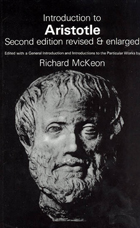 Introduction to Aristotle: Second Edition, Revised and Enlarged
Aristotle
University of Chicago Press, 1974 Since the publication of the original edition in 1947, Richard McKeon's Introduction to Aristotle has become the standard text for a variety of courses in philosophy and the humanities. For this revised and enlarged edition, Professor McKeon has completely rewritten his General Introduction and his introductions to the particular works. He has also expanded the collection to include material from On the Parts of Animals and the Rhetoric.
Aristotle's contribution to Western civilization is enormous. Our language, our distinctions, our ways of thinking, all are profoundly affected by his work. Since an understanding of Aristotle is indispensable for the understanding of our own culture, the ready availability of his work is crucial.
This collection, for students and general readers alike, provides in one volume Posterior Analytics (Logic), De Anima (On the Soul), Nicomachean Ethics, and Poetics, complete and unabridged, together with generous selections from Physics, On the Parts of Animals, Metaphysics, Politics, and Rhetoric. These works, together with Professor McKeon's revised introductions, provide a convenient and thorough exposure to the works of Aristotle and to the structural interrelations in the Aristotelian system of thought.
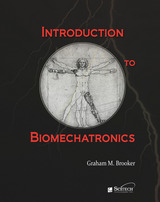 Introduction to Biomechatronics
Graham M. Brooker
The Institution of Engineering and Technology, 2012 This is the age of biomechatronics, a time where mechanics and electronics can interact with human muscle, skeleton, and nervous systems to assist or replace limbs, senses, and even organs damaged by trauma, birth defects, or disease. Introduction to Biomechatronics provides biomedical engineering students and professionals with the fundamental mechatronic (mechanics, electronics, robotics) engineering knowledge they need to analyze and design devices that improve lives. The first half of the book provides the engineering background to understand all the components of a biomechatronic system: the human subject, stimulus or actuation, transducers and sensors, signal conditioning elements, recording and display, and feedback elements. It also includes the major functional systems of the body to which biomechatronics can be applied including: biochemical, nervous, cardiovascular, respiratory, and musculoskeletal. The second half discusses five broadly based inventions from a historical perspective and supported by the relevant technical detail and engineering analysis. It begins with the development of hearing prostheses including middle-ear implantable hearing devices and the amazingly successful cochlear implant. This is followed by sensory substitution and visual prostheses that researchers hope will do the same for the blind as the cochlear implant has done for the deaf. The last three chapters are more mechatronic in focus, examining artificial hearts, respiratory aids from the iron lung to the latest CPAP devices, and finally artificial limbs from the first hooks and peg legs to limbs that move and have a sense of touch.
Introduction to Biomechatronics: Mechatronic considerations, Volume 1
Graham M. Brooker
The Institution of Engineering and Technology, 2025 Introduction to Biomechatronics, Second Edition, combines fundamental mechatronic (mechanics, electronics, robotics) engineering knowledge with state-of-the-art device designs that improve quality of life for patients worldwide. This new edition is comprehensively updated and includes new chapters on brain-machine interfaces and exoskeletons.
Introduction to Biomechatronics: Systems and applications, Volume 2
Graham M. Brooker
The Institution of Engineering and Technology, 2025 Introduction to Biomechatronics, Second Edition, combines fundamental mechatronic (mechanics, electronics, robotics) engineering knowledge with state-of-the-art device designs that improve quality of life for patients worldwide. This new edition is comprehensively updated and includes new chapters on brain-machine interfaces and exoskeletons.
Introduction to Broadband Communication Systems
Cajetan M. Akujuobi
The Institution of Engineering and Technology, 2008 Broadband networks, such as asynchronous transfer mode (ATM), frame relay, and leased lines, allow us to easily access multimedia services (data, voice, and video) in one package. Exploring why broadband networks are important in modern-day telecommunications, Introduction to Broadband Communication Systems covers the concepts and components of both standard and emerging broadband communication network systems.
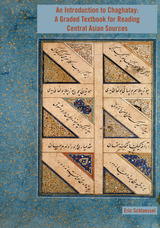 An Introduction to Chaghatay: A Graded Textbook for Reading Central Asian Sources
Eric Schluessel
Michigan Publishing, 2018 The Chaghatay language was used across Central Asia from the 1400s through the 1950s. Chroniclers, clerks, and poets in modern-day Afghanistan, Xinjiang, Uzbekistan, and beyond wrote countless volumes of text in Chaghatay, from the famed Baburnama to the documents of everyday life. However, even more and more material in Chaghatay is becoming available to scholars, few are able to read the language with ease.
An Introduction to Chaghatay is the first textbook in over a century to introduce this language to English-speaking students. This book is designed to build a foundation in reading Chaghatay without assuming any background knowledge on the part of the reader. These graded, cumulative lessons include common vocabulary, accessible grammar explanations, and examples of Chaghatay manuscripts. Authentic texts introduce the student to different genres, including hagiographies, documents, “stories of the prophets,” and newspapers while introducing critical skills in paleography.
Eric Schluessel is Assistant Professor of Chinese History and Politics at the University of Montana. He holds a PhD in History and East Asian Languages from Harvard University, an MA in Linguistics from the School of Oriental and African Studies, and an MA in Central Eurasian Studies from Indiana University. He is the author of several articles on the history of Chinese Central Asia and is currently preparing a critical edition and translation of Mullah Musa Sayrami’s Tarikh-i Hamidi, a chronicle of Xinjiang in the nineteenth century.
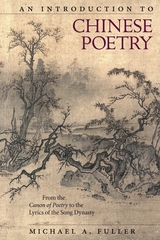 An Introduction to Chinese Poetry: From the Canon of Poetry to the Lyrics of the Song Dynasty
Michael A. Fuller
Harvard University Press, 2017 This innovative textbook for learning classical Chinese poetry moves beyond the traditional anthology of poems translated into English and instead brings readers—including those with no knowledge of Chinese—as close as possible to the texture of the poems in their original language. The first two chapters introduce the features of classical Chinese that are important for poetry and then survey the formal and rhetorical conventions of classical poetry. The core chapters present the major poets and poems of the Chinese poetic tradition from earliest times to the lyrics of the Song Dynasty (960–1279).
Each chapter begins with an overview of the historical context for the poetry of a particular period and provides a brief biography for each poet. Each of the poems appears in the original Chinese with a word-by-word translation, followed by Fuller’s unadorned translation, and a more polished version by modern translators. A question-based study guide highlights the important issues in reading and understanding each particular text.
Designed for classroom use and for self-study, the textbook’s goal is to help the reader appreciate both the distinctive voices of the major writers in the Chinese poetic tradition and the grand contours of the development of that tradition.
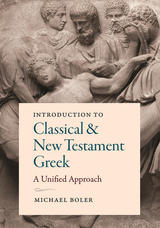 Introduction to Classical and New Testament Greek: A Unified Approach
Michael Boler
Catholic University of America Press, 2020 The defining feature of this textbook is the treatment of classical and New Testament Greek as one language using primary sources. All the example sentences the students will translate are real Greek sentences, half of which are taken from classical literature and philosophy and half of which are directly from the New Testament. The advantage of this approach is that it highlights the linguistic, literary, and historical connections between classical Greece and early Christianity. Rather than having students memorize isolated tables and artificial sentences, Michael Boler spent years combing through thousands of pages of literature, philosophy, and scripture to find short, powerful sentences that not only teach the grammatical concepts in each chapter, but also contain seeds of wisdom that will spark wonder and discussion.
Introduction to New Testament and Classical Greek is born out of classroom experience in a Catholic liberal arts university whose students were disappointed to be forced to choose between textbooks that taught classical Greek in isolation and ones that focused exclusively on the New Testament. By the end of this book, students will have read over 200 lines of scripture and an equal amount of ancient literature from Homer to Aristotle. They will also have the grammatical knowledge to continue to read classical and New Testament Greek. Each chapter contains a section at the end that delves deeply into the etymology and background of the words and passages encountered in the respective chapter. Professors will thus be able to use these chapters as a bridge to philosophical, theological, historical, and literary topics that will enrich the class.
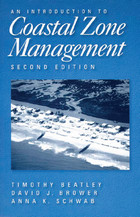 An Introduction to Coastal Zone Management: Second Edition
Timothy Beatley, David J. Brower, and Anna K. Schwab
Island Press, 2002 An Introduction to Coastal Zone Management, Second Edition offers a comprehensive overview of coastal planning and management issues for students and professionals in the field. Since publication of the first edition in 1994, population growth and increasing development pressures on our coasts have made the need for forward-looking, creative, and sustainable visions for the future even greater. This completely updated and revised edition includes: - significantly updated data and statistics including discussions of population and growth trends, federal and state coastal expenditures, disaster assistance expenditures, and damage levels from hurricanes and coastal storms
- updated legislative and programmatic material, including the Stafford Act and mitigation assistance programs, and changes in the Coastal Zone Management Act
- expanded coverage of physical and biological attributes and conditions of the coastal zone
- expanded and updated discussions of innovative local coastal management
- new chapters on creative coastal design and development and lessons from coastal programs in other countries
An Introduction to Coastal Zone Management, Second Edition is the only available book that addresses the serious coastal trends and pressures in the U.S., assesses the current policy and planning framework, and puts forth a compelling vision for future management and sustainable coastal planning. It is an important resource for undergraduate and graduate students of coastal planning as well as for local and state officials, residents of coastal communities, environmental advocates, developers, and others concerned with coastal issues.
Introduction to Digital Wireless Communications
Hong-Chuan Yang
The Institution of Engineering and Technology, 2017 This book provides an efficient introduction to fundamental and advanced digital transmission technologies in current and future wireless communication systems. The objective is to help students and engineers quickly grasp the operating principles and design trade-offs of various wireless transmission technologies, which will enable them to carry out product development or perform academic research in the field.
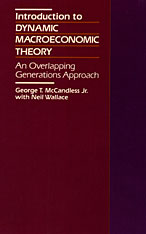 Introduction to Dynamic Macroeconomic Theory: An Overlapping Generations Approach
George McCandless and Neil Wallace
Harvard University Press, 1991 Economies are constantly in flux, and economists have long sought reliable means of analyzing their dynamic properties. This book provides a succinct and accessible exposition of modern dynamic (or intertemporal) macroeconomics. The authors use a microeconomics-based general equilibrium framework, specifically the overlapping generations model, which assumes that in every period there are two generations which overlap. This model allows the authors to fully describe economies over time and to employ traditional welfare analysis to judge the effects of various policies. By choosing to keep the mathematical level simple and to use the same modeling framework throughout, the authors are able to address many subtle economic issues. They analyze savings, social security systems, the determination of interest rates and asset prices for different types of assets, Ricardian equivalence, business cycles, chaos theory, investment, growth, and a variety of monetary phenomena.
Introduction to Dynamic Macroeconomic Theory will become a classic of economic exposition and a standard teaching and reference tool for intertemporal macroeconomics and the overlapping generations model. The writing is exceptionally clear. Each result is illustrated with analytical derivations, graphically, and by worked out examples. Exercises, which are strategically placed, are an integral part of the book.
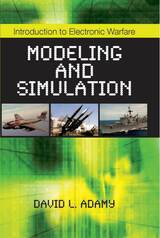 Introduction to Electronic Warfare Modeling and Simulation
David L. Adamy
The Institution of Engineering and Technology, 2006 This unique book covers the whole field of electronic warfare modeling and simulation at a systems level, including chapters that describe basic electronic warfare (EW) concepts. Written by a well-known expert in the field with more than 24 years of experience, the book explores EW applications and techniques and the radio frequency spectrum, with primary emphasis on HF (high frequency) to microwave. A detailed resource for entry-level engineering personnel in EW, military personnel with no radio or communications engineering background, technicians and software professionals, the work helps you understand the basic concepts required for modeling and simulation, as well as fidelity and other practical aspects of simulation design and application. You get clear explanations of important mathematical concepts, such as decibel notation and spherical trigonometry. This informative reference explains how to facilitate the generation of realistic computer models of EW equipment. Moreover, it describes specific types of EW equipment, how they work and how each is mathematically modeled. The book concludes with a description of the various types of models and simulations and the ways they are applied to training and equipment testing tasks.
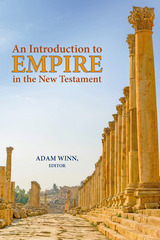 An Introduction to Empire in the New Testament
Adam Winn
SBL Press, 2016 Explore how empire is a crucial foreground for reading and interpreting the New Testament In the last three decades, significant attention has been given to the way in which New Testament texts engage and respond to the imperial world in which they were written. The purpose of the present volume is to introduce students and non-specialists to the growing subfield of New Testament studies known as empire studies. Contributors seek to make readers aware of the significant work that has already been produced, while also pointing them to new ways in which this field is moving forward. The contributors are Bruce W. Longenecker, Richard A. Horsley, Warren Carter, Adam Winn, Eric D. Barreto, Beth M. Sheppard, Neil Elliot, James R. Harrison, Harry O. Maier, Deborah Krause, Jason A.Whitlark, Matthew R. Hauge, Kelly D. Liebengood, and Davina C. Lopez. Features: Essays from a diverse group of interpreters who at times have differing presuppositions, methods, and concerns Articles introduce students and non-specialists to the Roman imperial realities regularly encountered by first and second century Christians Contributions explore the strategies employed by early Christians to respond to the Roman empire
An Introduction to Fractional Control
Duarte Valério
The Institution of Engineering and Technology, 2012 Fractional control techniques provide an effective way to control dynamic behaviours, using fractional differential equations. This can include the control of fractional plants, the control of a plant using a fractional controller, or the control of a plant so that the controlled system will have a fractional behaviour to achieve a performance that would otherwise be hard to come by.
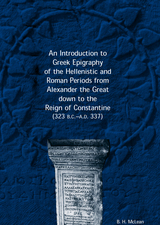 An Introduction to Greek Epigraphy of the Hellenistic and Roman Periods from Alexander the Great down to the Reign of Constantine
B. H. McLean
University of Michigan Press, 2011 “In short, this is a reference work of the best kind. For the beginner, it is indispensable. And for those who already know something about its subject matter, the book is in many ways useful, informative, and interesting. We all owe a debt to [the author] for undertaking this significant project, and for completing it so well.”
—Michael Peachin, Classical World “. . . provides invaluable road maps for non-epigraphers faced with passages of inscribed Greek.”
—Graham Shipley, Bryn Mawr Classical Review Greek inscriptions form a valuable resource for the study of all aspects of the Greco-Roman world. They are primary witnesses to society's laws and institutions, religious habits, and language. This volume provides students with the tools to take advantage of the historical value of these treasures. It examines letter forms, ancient names, and ancient calendars, knowledge of which is essential in reading inscriptions of all kinds. B. H. McLean discusses the classification of inscriptions into their various categories and analyzes particular types of inscriptions, including decrees, honorary inscriptions, dedications, funerary inscriptions, and manumissions. Finally, McLean includes special topics that bear upon the interpretation of specific features of inscriptions, such as Greek and Roman administrative titles and functions.
 An Introduction To Hegel: The Stages of Modern Philosophy
Howard P. Kainz
Ohio University Press, 1996 In a sense it would be inappropriate to speak of “Hegel’s system of philosophy,” because Hegel thought that in the strict sense there is only one system of philosophy evolving in the Western world. In Hegel’s view, although at times philosophy’s history seems to be a chaotic series of crisscrossing interpretations of meanings and values, with no consensus, there has been a teleological development and consistent progress in philosophy and philosophizing from the beginning; Hegel held that his own version of “German idealism” was simply bringing to final expression the latest refinements of an ongoing, perennial system. If we take Hegel at his word, then one of the best entries into his system would be through the history of philosophy, showing how systems and schools of thought prior to Hegel led up to his system. The most important currents to focus on, however, would be in modern philosophy, in which especially intensive changes led ultimately to German idealism and Hegel’s immediate predecessors. Fortunately, Hegel lectured extensively on the history of modern philosophy and structured his lectures in such a way as to throw light on the status of the “one system” of Western philosophy at the time — the status to which Hegel felt he had been contributing and was continuing to contribute. These lectures are of interest, first of all, as a systematic chronicle of philosophical positions in the heyday of modern philosophy, from Bacon to Hegel. Second, they are interesting because Hegel’s critical comments on his predecessors clarify his own positions: for example, the dialectic method and the importance of triplicity, the relationship of philosophy to the scientific method, the necessity for avoidance of the extremes of empiricism and of idealism, the subject/object problematic, the “identity” of rationality and reality, and the technical meaning in Hegel’s philosophy of “absolute,” “infinity,” and the “idea.”
Introduction to Husserlian Phenomenology
Rudolf Bernet, Iso Kern, and Eduard Marbach
Northwestern University Press, 1993 This comprehensive study of Husserl's phenomenology concentrates on Husserl's emphasis on the theory of knowledge. The authors develop a synthetic overview of phenomenology and its relation to logic, mathematics, the natural and human sciences, and philosophy. The result is an example of philology at its best, avoiding technical language and making Husserl's thought accessible to a variety of readers.
An Introduction to Immigrant Incorporation Studies: European Perspectives
Edited by Marco Martiniello and Jan Rath
Amsterdam University Press, 2014 Focusing mainly on the European experience including Eastern Europe, this important volume offers an advanced introduction to immigrant incorporation studies from a historical, empirical and theoretical perspective. Beyond incorporation theories, renowned scholars in the field explore incorporation in action in different fields, policy issues and normative dimensions.
An Introduction to Interdisciplinary Research: Theory and Practice
Edited by Steph Menken and Machiel Keestra
Amsterdam University Press, 2016 One of the major areas of emphasis in academia in recent years has been interdisciplinary research, a trend that promises new insights and innovations rooted in cross-disciplinary collaboration. This book is designed to help students understand the tools required for stepping beyond traditional disciplinary boundaries and applying knowledge and insights from multiple fields. Relentlessly focused on practical applications, the book will enable students to plan and execute their own interdisciplinary research projects.
An Introduction to International Migration Studies: European Perspectives
Edited by Marco Martiniello and Jan Rath
Amsterdam University Press, 2013 Focusing mainly on the European experience including Eastern Europe, this important volume offers an advanced introduction to immigrant incorporation studies from a historical, empirical and theoretical perspective. Beyond incorporation theories, renowned scholars in the field explore incorporation in action in different fields, policy issues and normative dimensions.
 Introduction to International Studies
Maurits Berger
Leiden University Press, 2025 "International Studies aims to understand the global complexities of the world in which we live today. Central in these complexities is the position of the human individual, who is both an actor and reactor in global events. This textbook introduces three I's – interests, identities, ideas – that provide a framework to understand human behaviour in today's world. The role of people is further elaborated in the three spatial dimensions of the local, regional, and global level. This gives International Studies the character of a 3-D chessboard with human players. Unique in this textbook is the framework of global scopes used for analysis of the global complexities: global structures (such as economics, belief systems, states, intergovernmental organizations), global trends (such as nationalism, power changes, secularization, identity), and global challenges (such as sustainable development, climate change, pandemics, unwanted migration). This textbook approaches International Studies as a field of study that enables students to navigate the framework of the three I's, the three spatial dimensions and the three global scopes. The International Studies student will acquire a broad overview of the various fields and disciplines and, as a consequence, the ability to move across traditional academic boundaries.
 Introduction to Jewish and Catholic Bioethics: A Comparative Analysis
Aaron L. Mackler
Georgetown University Press, 2003 Leavened with compassion, common sense, and a readable style, this introduction to complicated bioethical issues from both Jewish and Catholic perspectives is as informative as it is undaunting. Aaron Mackler takes the reader through methodology in Roman Catholic moral theology and compares and contrasts it with methodology as it is practiced in Jewish ethics. He then skillfully wends his way through many topics foremost on the contemporary ethical agenda for both Jewish and Catholic ethicists: euthanasia and assisted suicide, end-of-life decisions, abortion, in vitro fertilization, and the ever-growing problem of justice regarding access to health care and medical resources. A concluding chapter summarizes general tendencies in the comparison of the two traditions, and addresses the significance of convergence and divergence between these traditions for moral thinkers within each faith community, and generally in western democracies such as the United States. As Mackler overviews these issues, he points out the divergences and the commonalities between the two traditions—clarifying each position and outlining the structure of thinking that supports them. At the heart of both Catholic and Jewish perspectives on bioethics is a life-affirming core, and while there may be differences in the "why" of those ethical divergences, and in the "how" each arrived at varying—or the same—conclusions, both traditions, in the words of James McCartney as quoted in the introduction, "are guided by the principle that life is precious; that we are bidden to preserve and guard our health; that we are bidden to intervene in nature to raise the human estate; and that our lives are not our own, but are part of the legacy bequeathed to us by the Creator." This book has been carefully crafted in that spirit.
An Introduction to Legal Reasoning
Edward H. Levi
University of Chicago Press, 1962 This volume will be of interest and value to students of logic, ethics, and political philosophy, as well as to members of the legal profession and to everyone concerned with problems of government and jurisprudence. By citing a large number of cases, the author makes his presentation of the processes of judicial interpretation particularly lucid.
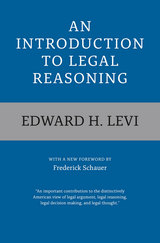 An Introduction to Legal Reasoning
Edward H. Levi
University of Chicago Press, 2013 Originally published in 1949, An Introduction to Legal Reasoning is widely acknowledged as a classic text. As its opening sentence states, “This is an attempt to describe generally the process of legal reasoning in the field of case law and in the interpretation of statutes and of the Constitution.” In elegant and lucid prose, Edward H. Levi does just that in a concise manner, providing an intellectual foundation for generations of students as well as general readers.
For this edition, the book includes a substantial new foreword by leading contemporary legal scholar Frederick Schauer that helpfully places this foundational book into its historical and legal contexts, explaining its continuing value and relevance to understanding the role of analogical reasoning in the law. This volume will continue to be of great value to students of logic, ethics, and political philosophy, as well as to members of the legal profession and everyone concerned with problems of government and jurisprudence.
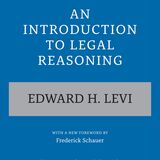 An Introduction to Legal Reasoning
Edward H. Levi
University of Chicago Press, 2013 This is an auto-narrated audiobook version of this book.
Originally published in 1949, An Introduction to Legal Reasoning is widely acknowledged as a classic text. As its opening sentence states, “This is an attempt to describe generally the process of legal reasoning in the field of case law and in the interpretation of statutes and of the Constitution.” In elegant and lucid prose, Edward H. Levi does just that in a concise manner, providing an intellectual foundation for generations of students as well as general readers.
For this edition, the book includes a substantial new foreword by leading contemporary legal scholar Frederick Schauer that helpfully places this foundational book into its historical and legal contexts, explaining its continuing value and relevance to understanding the role of analogical reasoning in the law. This volume will continue to be of great value to students of logic, ethics, and political philosophy, as well as to members of the legal profession and everyone concerned with problems of government and jurisprudence.
An Introduction to Literary Chinese: First Edition
Michael A. Fuller
Harvard University Press, 1999 This textbook for beginning students contains 35 lessons of increasing difficulty designed to introduce students to the basic patterns of Classical Chinese and to provide practice in reading a variety of texts. The lessons are structured to encourage students to do more work with dictionaries and other references as they progress through the book. The Introduction provides an overview of the grammar of Literary Chinese. Part I presents eight lessons on sentence structure, parts of speech, verbs, and negatives. Part II consists of sixteen intermediate-level lessons, and Part III offers five advanced-level selections. Part IV has six lessons based on Tang and Song dynasty prose and poetry.
An Introduction to Literary Chinese: Revised Edition
Michael A. Fuller
Harvard University Press, 2004 This textbook for beginning students contains 35 lessons of increasing difficulty designed to introduce students to the basic patterns of Classical Chinese and to provide practice in reading a variety of texts. The lessons are structured to encourage students to do more work with dictionaries and other references as they progress through the book.
The Introduction provides an overview of the grammar of Literary Chinese. Part I presents eight lessons on sentence structure, parts of speech, verbs, and negatives. Part II consists of sixteen intermediate-level lessons, and Part III offers five advanced-level selections. Part IV has six lessons based on Tang and Song dynasty prose and poetry.
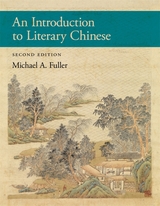 An Introduction to Literary Chinese: Second Edition
Michael A. Fuller
Harvard University Press, 2024 The second edition of An Introduction to Literary Chinese incorporates recent developments in linguistics and has been expanded to include a lesson on Buddhist texts. Beginning with an overview of literary Chinese—its phonology, morphology, and syntax, as well as a short account of the nature of the writing system—the textbook then presents thirty-six lessons of increasing difficulty designed to introduce students to the basic patterns of the language and give them practice in reading a variety of texts.
Part I presents eight lessons on the basic syntactic components in literary Chinese. Each lesson begins with an overview of its topic, introduces an exemplary text, and provides a glossary, notes, and practice exercises. The sixteen lessons in Part II use increasingly long and complex texts to introduce styles of narrative and argumentation in literary Chinese and, at the same time, solidify students’ grasp of the syntax. The advanced texts in the six lessons in Part III introduce students to central authors and philosophical traditions in premodern China and broaden the process of reading to include elements of cultural and historical interpretation. Part IV has six lessons comprising important Tang and Song dynasty prose and poetic texts.
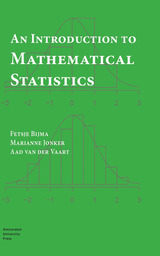 An Introduction to Mathematical Statistics
Fetsje Bijma, Marianne Jonker, and Aad van der Vaart
Amsterdam University Press, 2017 Statistics is the science that focuses on drawing conclusions from data, by modeling and analyzing the data using probabilistic models. In 'An Introduction to Mathematical Statistics' the authors describe key concepts from statistics and give a mathematical basis for important statistical methods. Much attention is paid to the sound application of those methods to data.
The three main topics in statistics are estimators, tests, and confidence regions. The authors illustrate these in many examples, with a separate chapter on regression models, including linear regression and analysis of variance. They also discuss the optimality of estimators and tests, as well as the selection of the best-fitting model.Each chapter ends with a case study in which the described statistical methods are applied.
This book assumes a basic knowledge of probability theory, calculus, and linear algebra.
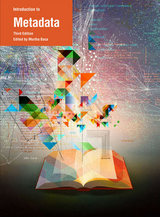 Introduction to Metadata: Third Edition
Murtha Baca
J. Paul Getty Trust, The, 2016 Metadata provides a means of indexing, accessing, preserving, and discovering digital resources. The volume of digital information available over electronic networks has created a pressing need for standards that ensure correct and proper use and interpretation of the data by its owners and users. Well-crafted metadata is needed more now than ever before and helps users to locate, retrieve, and manage information in this vast and complex universe.
The third edition of Introduction to Metadata, first published in 1998, provides an overview of metadata, including its types, roles, and characteristics; a discussion of metadata as it relates to Web resources; and a description of methods, tools, standards, and protocols for publishing and disseminating digital collections. This revised edition is an indispensable resource in the field, addressing advances in standards such as Linked Open Data, changes in intellectual property law, and new computing technologies, and offering an expanded glossary of essential terms.
 Introduction to Middle Welsh
Joshua Byron Smith
Catholic University of America Press, 2026 Introduction to Middle Welsh offers a comprehensive introduction to Middle Welsh grammar, leading the student through sixty chapters of carefully scaffolded exercises and readings. Written in an engaging style and aimed toward learners without any knowledge of Modern Welsh, this book guides students to a high intermediate level of proficiency with the language, focusing particularly on prose.
The first twenty chapters employ both original Middle Welsh sentences and simplified sentences based on originals, allowing learners to master basic grammatical concepts without being overwhelmed by vocabulary. New vocabulary is introduced at the end of each lesson, so that learners can complete the exercises and translation without looking up words in the glossary. The glossary, for its part, contains over 1,500 vocabulary items, which provides students with many of the most commonly used words in Middle Welsh literature. When available, useful etymologies are also provided, making connections to languages that students might already know. In addition to several hundred carefully chosen sentences for translation exercises, Introduction to Middle Welsh includes eighteen selections from literature, ranging from poetry to law, showing the variety of the Middle Welsh literary corpus.
Ideal for the classroom or self-taught learners, Introduction to Middle Welsh will appeal to those with an interest in Welsh, medieval literature, and Celtic studies.
Introduction to Moral Theology (Catholic Moral Thought, Volume 1)
Romanus Cessario, O.P.
Catholic University of America Press, 2001 The present volume, the first in the new Catholic Moral Thought series, responds to the need for a new introduction to the basic and central elements of Catholic moral theology written in the light of Veritatis splendor.
Introduction to Moral Theology, revised edition
Romanus Cessario
Catholic University of America Press, 2013 Originally published in 2001, Introduction to Moral Theology responded to the need for a new introduction to the basic and central elements of Catholic moral theology written in the light of Veritatis splendor. Since then, it has become a standard text for students and a reputable resource on such topics as moral theology and the good of the human person created in God's image; natural law; principles of human action; determination of the moral good through objects, ends, and circumstances; and the virtues, gifts of the Holy Spirit, and the Beatitudes.
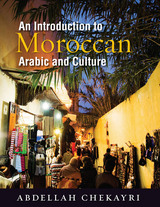 An Introduction to Moroccan Arabic and Culture
Abdellah Chekayri
Georgetown University Press, 2011 An Introduction to Moroccan Arabic and Culture and the accompanying multimedia DVD are designed to enable students to communicate effectively using Moroccan Arabic. Since Moroccan Arabic is rarely written or used in formal communication, the strength of the book lies in training learners in speaking and listening skills that can be used in everyday situations. Upon completing this course, students should be able to:
• greet people
• introduce themselves
• ask and reply to simple questions
• use days and numbers in context
• order food
• shop
• make appointments and reservations
• give directions
• talk about future plans
• use common idiomatic expressions Each chapter includes:
• cultural introductions to social, religious, or cultural aspects of Moroccan society
• listening comprehension exercises
• vocabulary exercises
• dialogues and texts
• conversation practice
• grammar instruction on how native speakers structure their speech
• interactive and video materials to support cultural understanding, listening, speaking, and grammar explanations The book uses Romanized transcription alongside Arabic script for the first three chapters and thereafter only the Arabic script. It also includes a glossary and answer key. It requires approximately 120 contact hours, plus 180-240 additional hours of preparation outside class. A novice student should reach the intermediate-mid level of proficiency by the end of this course.
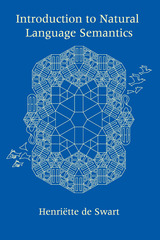 Introduction to Natural Language Semantics
Henriëtte de Swart
CSLI, 1998 Semantics is defined as the study of meaning expressed by elements of a language or combinations thereof. Utterances are not just noises or scribbles, they are used to convey information, and they are linked with kinds of events and with states of mind.
This text examines what issues semantics, as a theory of meaning, should address; determining what the meanings of words of the language are and how to semantically combine elements of a language to build up complex meanings. Logical languages are then developed as formal metalanguages to natural language. Subsequent chapters address propositional logic, the syntax and semantics of (first-order) predicate logic as an extension of propositional logic, and Generalized Quantifier theory. Going beyond extensional theory, Henri'tte de Swart relativizes the interpretation of expressions to times to account for verbal tense, time adverbials and temporal connectives and introduces possible worlds to model intensions, modal adverbs and modal auxiliaries.
This broad overview of natural language semantics should cover most of the points addressed in an introductory course. Numerous exercises punctuate each chapter and an example exam based on the materials presented is included, making this volume a perfect textbook and resource for any undergraduate or graduate-level introductory course in semantics.
 Introduction to Non-Marxism
François Laruelle
University of Minnesota Press, 2014 Following the collapse of the communist states it was assumed that Marxist philosophy had collapsed with it. In Introduction to Non-Marxism, François Laruelle aims to recover Marxism along with its failure by asking the question “What is to be done with Marxism itself?” To answer, Laruelle resists the temptation to make Marxism more palatable after the death of metaphysics by transforming Marxism into a mere social science or by simply embracing with evangelical fervor the idea of communism. Instead Laruelle proposes a heretical science of Marxism that will investigate Marxism in both its failure and power so as to fashion new theoretical tools. In the course of engaging with the material of Marxism, Laruelle takes on the philosophy of Marx along with important philosophers who have extended that philosophy including Althusser, Balibar, Negri as well as the attempt at a phenomenological Marxism found in the work of Michel Henry. Through this engagement Laruelle develops with great precision the history and function of his concept of determination-in-the-last-instance. In the midst of the assumed failure of Marxism and the defections and resentment that followed, Laruelle’s non-Marxism responds with the bold declaration: “Do not give up on theory!”
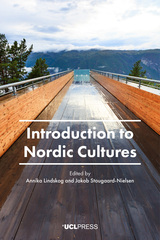 Introduction to Nordic Cultures
Edited by Annika Lindskog and Jakob Stougaard-Nielsen
University College London, 2020 Introduction to Nordic Cultures is an innovative, interdisciplinary introduction to Nordic history, cultures, and societies from medieval times to today. The textbook spans the whole Nordic region, covering historical periods from the Viking Age to modern society, and engages with a range of subjects: from runic inscriptions on iron rings and stone monuments, via eighteenth-century scientists, Ibsen’s dramas and turn-of-the-century travel, to twentieth-century health films and the welfare state, nature ideology, Greenlandic literature, Nordic Noir, migration, ‘new’ Scandinavians, and stereotypes of the Nordic. This book provides fundamental knowledge and insights into the history and structures of Nordic societies while constructing critical analyses around specific case studies that help build an informed picture of how societies grow and of the interplay between history, politics, culture, geography, and people.
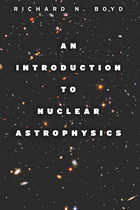 An Introduction to Nuclear Astrophysics
Richard N. Boyd
University of Chicago Press, 2008 Nuclear astrophysics is the study of how all naturally occurring elements formed and evolved into our present universe via nuclear processes, beginning with the Big Bang and continuing today in astrophysical objects such as stars, x-ray bursters, and supernovae. Emerging from traditional studies in astrophysics and particle research, this cross-disciplinary field touches upon astronomy, astrophysics, cosmology, and particle physics.
In An Introduction to Nuclear Astrophysics, author Richard Boyd includes basic nomenclature and information so that students from astronomy or physics can quickly orient themselves in the material. Subsequent chapters describe earthbound and space born instruments operating in service to nuclear astrophysics worldwide; background topics such as nuclear and neutrino physics, scattering formalism, and thermonuclear reaction rates; and information on galactic chemical evolution, solar nucleosynthesis, s- and r-processes, and gamma-ray bursts. Each chapter includes problem sets against which students may test their knowledge before moving ahead, and the author has included copious references intended to guide students to further study.
An Introduction to Nuclear Astrophysics is an essential textbook for undergraduate and graduate students in astronomy and astrophysics. It is also an invaluable overview of the subject for researchers in nuclear astrophysics and related fields.
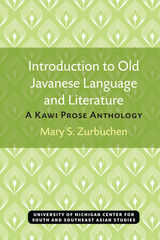 Introduction to Old Javanese Language and Literature: A Kawi Prose Anthology
Mary S. Zurbuchen
University of Michigan Press, 1976 The oldest and most extensive written language of Southeast Asia is Old Javanese, or Kawi. It is the oldest language in terms of written records, and the most extensive in the number and variety of its texts. Javanese literature has taken many forms. At various times, prose stories, sung poetry or other metrical types, chronicles, scientific, legal, and philosophical treatises, prayers, chants, songs, and folklore were all written down. Yet relatively few texts are available in English. The unstudied texts remaining are an unexplored record of Javanese culture as well as a language still alive as a literary medium in Bali. Introduction to Old Javanese Language and Literature represents a first step toward remedying the dearth of Old Javanese texts available to English-speaking students. The ideal teaching companion, this anthology offers transliterated original texts with facing-page English translations. Theanthology focuses on prose selections, since their straightforward style and syntax offer the beginning student the most rewarding experience. Four sections make up the collection. Part I offers several short readings as the most accessible entry point into Old Javanese. Part II contains two moralistic fables from an Old Javanese retelling of the Hindu Pañcatantra cycle. Part III takes up the epic, providing excerpts from one of the books of the Old Javanese retelling of the Mahābhārata. Part IV offers excerpts from two chronicles, the generic conventions of which challenge received notions of history writing because of their supernaturalism and folkloric elements. Includes introduction, glossary, and notes.
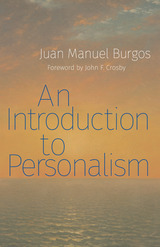 An Introduction to Personalism
Juan Manuel Burgos
Catholic University of America Press, 2018 Much has been written about the great personalist philosophers of the 20th century – including Jacques Maritain and Emmanuel Mournier, Martin Buber and Emmanuel Levinas, Dietrich von Hildebrand and Edith Stein, Max Scheler and Karol Wojtyla (later Pope John Paul II) – but few books cover the personalist movement as a whole. An Introduction to Personalism fills that gap.
Juan Manuel Burgos shows the reader how personalist philosophy was born in response to the tragedies of two World Wars, the Great Depression, and the totalitarian regimes of the 1930s. Through a revitalization of the concept of the person, an array of thinkers developed a philosophy both rooted in the best of the intellectual tradition and capable of dialoguing with contemporary concerns.
Burgos then delves into the potent ideas of more than twenty thinkers who have contributed to the growth of personalism, including Romano Guardini, Gabriel Marcel, Xavier Zubiri, and Michael Polanyi. Burgos’s encyclopedic knowledge of the movement allows for a concise and well-rounded perspective on each of the personalists studied.
An Introduction to Personalism concludes with a synthesis of personalist thought, bringing together the brightest insights of each personalist philosopher into an organic whole. Burgos argues that personalism is not an eclectic hodge-podge, but a full-fledged school of philosophy, and gives a dynamic and rigorous exposition of the key features of the personalist position.
Our times are marked by numerous and often contradictory ideas about the human person. An Introduction to Personalism presents an engaging anthropological vision capable of taking the lead in the debate about the meaning of human existence and of winning hearts and minds for the cause of the dignity of every person in the 21st century and beyond.
Introduction to Probability for Data Science
Stanley Chan
Michigan Publishing, 2021 [from the Preface] This introductory textbook in undergraduate probability emphasizes the inseparability between data (computing) and probability (theory) in our time. It examines the motivation, intuition, and implication of the probabilistic tools used in science and engineering: - Motivation: In the ocean of mathematical definitions, theorems, and equations, why should we spend our time on this particular topic but not another?
- Intuition: When going through the deviations, is there a geometric interpretation or physics beyond those equations?
- Implication: After we have learned a topic, what new problems can we solve?
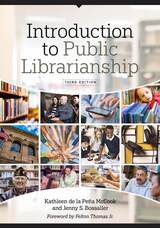 Introduction to Public Librarianship
Kathleen de la Peña McCook
American Library Association, 2018 Put simply, there is no text about public librarianship more rigorous or comprehensive than McCook's survey. Now, the REFORMA Lifetime Achievement Award-winning author has teamed up with noted public library scholar and advocate Bossaller to update and expand her work to incorporate the field's renewed emphasis on outcomes and transformation. This "essential tool" (Library Journal) remains the definitive handbook on this branch of the profession. It covers every aspect of the public library, from its earliest history through its current incarnation on the cutting edge of the information environment, including - statistics, standards, planning, evaluations, and results;
- legal issues, funding, and politics;
- organization, administration, and staffing;
- all aspects of library technology, from structure and infrastructure to websites and makerspaces;
- adult services, youth services, and children's services;
- associations, state library agencies, and other professional organizations;
- global perspectives on public libraries; and
- advocacy, outreach, and human rights.
Exhaustively researched and expansive in its scope, this benchmark text continues to serve both LIS students and working professionals.
Introduction to Quantum Computing for Business
Koen Groenland
Amsterdam University Press, 2025 How will businesses use quantum technology in the future? What problems will a quantum computer solve? How long will it take before these devices become commercially relevant?
With the first generation of quantum computers on the horizon, understanding their impact is more relevant than ever. Luckily, you don’t need a physics degree to understand the functionality of these computers – just like you don’t need to know how a transistor works to excel in conventional IT.
This book is the perfect introduction to the opportunities and threats of quantum technologies. It equips you with the necessary knowledge to join cutting-edge discussions and make strategic decisions.
Introduction to Radar Target Recognition
P. Tait
The Institution of Engineering and Technology, 2006 This book text provides an overview of the radar target recognition process and covers the key techniques being developed for operational systems. It is based on the fundamental scientific principles of high resolution radar, and explains how the underlying techniques can be used in real systems, taking into account the characteristics of practical radar system designs and component limitations. It also addresses operational aspects, such as how high resolution modes would fit in with other functions such as detection and tracking.
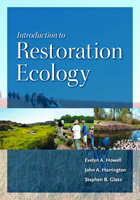 Introduction to Restoration Ecology
Evelyn A. Howell, John A. Harrington, and Stephen B. Glass
Island Press, 2011 Introduction to Restoration Ecology equips students and emerging practitioners with the knowledge, tools, and critical thinking skills needed to tackle complex ecological restoration challenges. Blending science, design, and real-world application, this interdisciplinary text provides a practical framework for restoring degraded ecosystems in diverse environments and cultural contexts.
Developed by a team of ecologists and landscape architects with decades of experience in both teaching and on-the-ground restoration work, the book introduces a step-by-step process rooted in ecological theory and tested through years of classroom instruction at the University of Wisconsin–Madison. Rather than offering a one-size-fits-all solution, the authors emphasize adaptability—helping readers navigate the uncertainty, variability, and site-specific constraints that shape real-world restoration efforts.
Each chapter is enriched with “Food for Thought” prompts that encourage students to reflect on the material, apply concepts to current conservation issues, and engage with the social, political, and ethical dimensions of ecological work. The result is a resource that fosters both scientific literacy and professional judgment.
Whether preparing for careers in environmental science, conservation planning, or land management, readers will come away with a grounded, flexible approach to ecological restoration—one that recognizes the importance of collaboration, context, and creativity in restoring resilient landscapes.
Introduction to RF Stealth
David L. Lynch Jr.
The Institution of Engineering and Technology, 2004 This is the only book focused on the complete aspects of RF Stealth design. It is the first book to present and explain first order methods for the design of active and passive stealth properties. Everything from Electronic Order of Battle to key component design is covered.
An Introduction to RF Stealth
David Lynch Jr.
The Institution of Engineering and Technology, 2021 This expanded, revised and updated new edition of Introduction to RF Stealth covers two major topics: Low Observables and Low Probability of Intercept (LO and LPI) of radars and data links, collectively sometimes called Stealth. Each chapter includes examples, student exercises and references. Worked simulations are available that illustrate the techniques described.
 An Introduction to Richard Wagner’s Der Ring des Nibelungen: A Handbook
William O. Cord
Ohio University Press, 1995 Today, more than a century after its first performance, Richard Wagner’s The Ring of Nibelung endures as one of the most significant artistic creations in the history of opera. This monumental work not only altered previously accepted concepts of music and drama but also inspired creative and intellectual efforts far beyond the field of opera. Previous studies of the Ring have appealed only to those already acquainted in some way with the Wagnerian art. For the uninitiated, Wagner and his landmark creation have seemed forbidding, and those eager to learn about the masterpiece have faced a vast and frequently esoteric body of commentary. Professor Cord addresses the interests of the non-specialist by taking the reader first into Wagner’s unique intent, and then through the complete history of the Ring. Cord, who has attended forty performances of the Ring, considers the conception of the poem, its development into a music-drama exemplifying Wagnerian thought, its introduction to the world, and the reactions and interpretation it elicits.
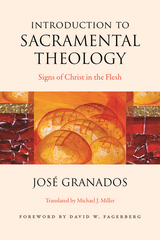 Introduction to Sacramental Theology: Signs of Christ in the Flesh
Jose Granados
Catholic University of America Press, 2021 Introduction to Sacramental Theology presents a complete overview of sacramental theology from the viewpoint of the body. This viewpoint is supported, in the first place, by Revelation, for which the sacraments are the place where we enter into contact with the body of the risen Jesus. It is a viewpoint, secondly, which is firmly rooted in our concrete human bodily experience, thus allowing for a strong connection between faith and life, creation and redemption.
From this point of view, the treatise on the sacraments occupies a strategic role. For the sacraments appear, not as the last of a series of topics (after dealing with Creation, Christ, the Church), but as the original place in which to stand in order to contemplate the entire Christian mystery. This point of view of the body, which resonates with contemporary philosophy, sheds fruitful light on classical themes, such as the relationship of the sacraments with creation, the composition of the sacramental sign, the efficacy of the sacraments, the sacramental character, the role of the minister, or the relationship of the sacrament with the Church as a sacrament.
As a result of this approach, the Eucharist takes on a central role, since this is the sacrament where the body of Jesus is made present. The rest of the sacraments are seen as prolongations of the eucharistic body, so as to fill all the time and space of the faithful. This foundation of the theology of the sacraments in eucharistic theology is supported by an analysis of the patristic and medieval tradition.
In order to support its conclusions, Introduction to Sacramental Theology examines the doctrine of Scripture (especially St. John and St. Paul), the main patristic and medieval authors (St. Augustine, Hugh of St. Victor, St. Bonaventure, St. Thomas Aquinas), the response of Trent to the protestant challenges, up to modern authors such as Scheeben, Rahner, Ratzinger, or Chauvet, including the teaching of Vatican II about the Church as a kind of sacrament.
An Introduction to Satellite Communications
D.I. Dalgleish
The Institution of Engineering and Technology, 1989 The aim of this book is to give a clear and concise exposition of the principles and practice of satellite communications by describing the development of communications-satellite services. It will be useful both to engineers who have worked in other fields of telecommunication and to students.
Introduction to Scholastic Theology
Ulrich G. Leinsle
Catholic University of America Press, 2010 With this book, distinguished historian of philosophy Ulrich Leinsle offers the first comprehensive introduction to scholastic theology -- a textbook for both Protestant and Catholic students.
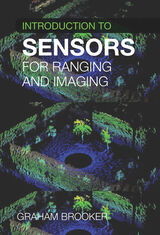 Introduction to Sensors for Ranging and Imaging
Graham Brooker
The Institution of Engineering and Technology, 2009 This is a comprehensive textbook and reference that provides a solid background in active sensing technology. Beginning with a historical overview and an introductory section on signal generation, filtering and modulation, it follows with a section on radiometry (infrared and microwave) as a background to the active sensing process. The core of the book is concerned with active sensing, starting with the basics of time-of-flight sensors (operational principles, components), and goes through the derivation of the radar range equation, and the detection of echo signals, both fundamental to the understanding of radar, sonar and lidar imaging. Several chapters cover signal propagation of both electromagnetic and acoustic energy, target characteristics, stealth and clutter. The remainder of the book involves the basics of the range measurement process, active imaging with an emphasis on noise and linear frequency modulation techniques, Doppler processing, and target tracking.
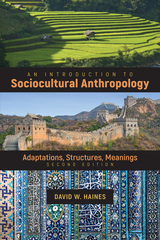 An Introduction to Sociocultural Anthropology: Adaptations, Structures, Meanings
David Haines
University Press of Colorado, 2017 An Introduction to Sociocultural Anthropology exposes students to the cultural detail and personal experiences that lie in the anthropological record and extends their anthropological understanding to contemporary issues. The book is divided into three parts that focus on the main themes of the discipline: ecological adaptations, structural arrangements, and interpretive meanings. Each chapter provides an overview of a particular topic and then presents two case examples that illuminate the range of variation in traditional and contemporary societies. New case examples include herders’ climate change adaptations in the Arctic, matrilineal Muslims in Indonesia, Google’s AI winning the Asian game Go, mass migration in China, cross-cultural differences in the use of social media, and the North American response to the Syrian refugee crisis. Instructors will also have digital access to all the book’s illustrations for class review. Covering the full range of sociocultural anthropology in a compact approach, this revised and updated edition of Cultural Anthropology: Adaptations, Structures, Meanings is a holistic, accessible, and socially relevant guide to the discipline for students at all levels.
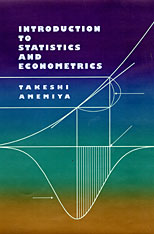 Introduction to Statistics and Econometrics
Takeshi Amemiya
Harvard University Press, 1994 This outstanding text by a foremost econometrician combines instruction in probability and statistics with econometrics in a rigorous but relatively nontechnical manner. Unlike many statistics texts, it discusses regression analysis in depth. And unlike many econometrics texts, it offers a thorough treatment of statistics. Although its only mathematical requirement is multivariate calculus, it challenges the student to think deeply about basic concepts.
The coverage of probability and statistics includes best prediction and best linear prediction, the joint distribution of a continuous and discrete random variable, large sample theory, and the properties of the maximum likelihood estimator. Exercises at the end of each chapter reinforce the many illustrative examples and diagrams. Believing that students should acquire the habit of questioning conventional statistical techniques, Takeshi Amemiya discusses the problem of choosing estimators and compares various criteria for ranking them. He also evaluates classical hypothesis testing critically, giving the realistic case of testing a composite null against a composite alternative. He frequently adopts a Bayesian approach because it provides a useful pedagogical framework for discussing many fundamental issues in statistical inference.
Turning to regression, Amemiya presents the classical bivariate model in the conventional summation notation. He follows with a brief introduction to matrix analysis and multiple regression in matrix notation. Finally, he describes various generalizations of the classical regression model and certain other statistical models extensively used in econometrics and other applications in social science.
 An Introduction to Sung Poetry
Kojiro Yoshikawa
Harvard University Press Despite the marked influence of Chinese poetry on that of the West in modern times, this book is the first full-length critical study of any major period of Chinese poetry to appear in a Western language. The period here dealt with is neither ancient China nor the medieval T’ang dynasty, from which the most numerous and most familiar previous translations have been drawn, but the era of the Sung dynasty (960–1279), of which the culture and thought were much more complex and “modern.”
The West is fairly familiar with many aspects of Sung civilization—the superb paintings and porcelains, the political and economic experiments, the philosophy of Neo-Confucianism. One vital manifestation of the Sung spirit has remained little studied—its enormous corpus of poetry. Though poets were far more numerous and prolific than their predecessors in any period of Chinese history, only the most famous of them, Su Tung-p’o, has been extensively written about and translated. In recent years attention has been paid to the tz’u lyrics of this period, but Sung accomplishments in the traditional shih form, which remained dominant, have been too long overshadowed by the brilliant T’ang poets who brought this form to classical perfection.
Though often taking its inspiration from T’ang poetry, Sung verse at its best is no mere imitation of its predecessors but a distinct literary development, exploring directions which T’ang writers had shunned or ignored, and striving deliberately for new effects and values. The most significant Sung poets were closer to concerns of daily life and society as a whole; they expressed a wider if less intense view of life and were more explicit in their philosophical ideas. They often had a more astringent, more “modern” tone, and in their diction some made use of colloquialisms and even slang. There may be found deliberate juxtapositions of classicism and vulgarity suggestive of a Laforgue or Eliot.
Kojiro Yoshikawa, one of the world’s outstanding scholars of Chinese literature, begins with an introduction describing the Sung cultural and literary milieu and the salient characteristics of the poetry it produced. He proceeds to discussions of the various schools and of individual poets both major and minor, pointing out their influences on each other. Numerous poems are cited throughout—many here appearing in English for the first time—to illustrate literary, biographical, or social points.
The author wrote this recent study for the Japanese public—which, although more familiar with Chinese poetry than most Western readers, generally needs more explication and background than Chinese scholars give in a book of this sort for their own people. It is thus particularly useful in a version accessible to non-Asians.
An Introduction to Sustainable Development
Peter Rogers, Kazi F. Jalal, and John A. Boyd
Harvard University Press An Introduction to Sustainable Development presents the concept and practice of sustainable development as a process that meets the needs of the present generation without compromising the ability of future generations to meet their own needs. This textbook examines the environmental, economic, and social dimensions of sustainable development by focusing on changing patterns of consumption, production, and distribution of resources.
The impact of globalization and the role of the private sector including multinational corporations are discussed. Case materials include domestic and international initiatives and projects; protection of coastal wetlands; development of community-based water supply and sanitation systems; sustainable energy, forest, and industrial development.
An Introduction to Swedenborg's Theological Latin
George F. Dole
Swedenborg Foundation Publishers, 1984
A primer and workbook designed either for classroom use or for individual study. The work concentrates on grammar and syntax in the Latin used by Emanuel Swedenborg (1688-1772). It contains brief Latin-English and English-Latin glossaries.
An Introduction to the Detective Story
Leroy Lad Panek
University of Wisconsin Press, 1987 This book is a no-apologies introduction to Detective Fiction. It's written in an aggressive, modern English well-suited to a genre which has traditionally broken ground in terms of aggressive writing, contemporary scenarios, and tough dialogue.
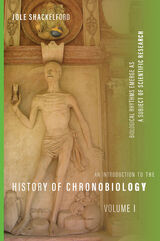 An Introduction to the History of Chronobiology, Volume 1: Biological Rhythms Emerge as a Subject of Scientific Research
Jole Shackelford
University of Pittsburgh Press, 2022 In three volumes, historian Jole Shackelford delineates the history of the study of biological rhythms—now widely known as chronobiology—from antiquity into the twentieth century. Perhaps the most well-known biological rhythm is the circadian rhythm, tied to the cycles of day and night and often referred to as the “body clock.” But there are many other biological rhythms, and although scientists and the natural philosophers who preceded them have long known about them, only in the past thirty years have a handful of pioneering scientists begun to study such rhythms in plants and animals seriously. Tracing the intellectual and institutional development of biological rhythm studies, Shackelford offers a meaningful, evidence-based account of a field that today holds great promise for applications in agriculture, health care, and public health. Volume 1 follows early biological observations and research, chiefly on plants; volume 2 turns to animal and human rhythms and the disciplinary contexts for chronobiological investigation; and volume 3 focuses primarily on twentieth-century researchers who modeled biological clocks and sought them out, including three molecular biologists whose work in determining clock mechanisms earned them a Nobel Prize in 2017.
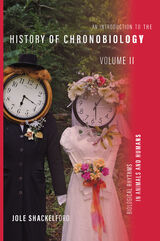 An Introduction to the History of Chronobiology, Volume 2: Biological Rhythms in Animals and Humans
Jole Shackelford
University of Pittsburgh Press, 2022 In three volumes, historian Jole Shackelford delineates the history of the study of biological rhythms—now widely known as chronobiology—from antiquity into the twentieth century. Perhaps the most well-known biological rhythm is the circadian rhythm, tied to the cycles of day and night and often referred to as the “body clock.” But there are many other biological rhythms, and although scientists and the natural philosophers who preceded them have long known about them, only in the past thirty years have a handful of pioneering scientists begun to study such rhythms in plants and animals seriously. Tracing the intellectual and institutional development of biological rhythm studies, Shackelford offers a meaningful, evidence-based account of a field that today holds great promise for applications in agriculture, health care, and public health. Volume 1 follows early biological observations and research, chiefly on plants; volume 2 turns to animal and human rhythms and the disciplinary contexts for chronobiological investigation; and volume 3 focuses primarily on twentieth-century researchers who modeled biological clocks and sought them out, including three molecular biologists whose work in determining clock mechanisms earned them a Nobel Prize in 2017.
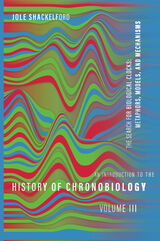 An Introduction to the History of Chronobiology, Volume 3: The Search for Biological Clocks: Metaphors, Models, and Mechanisms
Jole Shackelford
University of Pittsburgh Press, 2022 In three volumes, historian Jole Shackelford delineates the history of the study of biological rhythms—now widely known as chronobiology—from antiquity into the twentieth century. Perhaps the most well-known biological rhythm is the circadian rhythm, tied to the cycles of day and night and often referred to as the “body clock.” But there are many other biological rhythms, and although scientists and the natural philosophers who preceded them have long known about them, only in the past thirty years have a handful of pioneering scientists begun to study such rhythms in plants and animals seriously. Tracing the intellectual and institutional development of biological rhythm studies, Shackelford offers a meaningful, evidence-based account of a field that today holds great promise for applications in agriculture, health care, and public health. Volume 1 follows early biological observations and research, chiefly on plants; volume 2 turns to animal and human rhythms and the disciplinary contexts for chronobiological investigation; and volume 3 focuses primarily on twentieth-century researchers who modeled biological clocks and sought them out, including three molecular biologists whose work in determining clock mechanisms earned them a Nobel Prize in 2017.
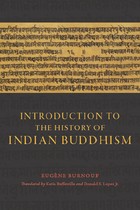 Introduction to the History of Indian Buddhism
Eugène Burnouf
University of Chicago Press, 2010 The most influential work on Buddhism to be published in the nineteenth century, Introduction à l’histoire du Buddhisme indien, by the great French scholar of Sanskrit Eugène Burnouf, set the course for the academic study of Buddhism—and Indian Buddhism in particular—for the next hundred years. First published in 1844, the masterwork was read by some of the most important thinkers of the time, including Schopenhauer and Nietzsche in Germany and Emerson and Thoreau in America.
Katia Buffetrille and Donald S. Lopez Jr.’s expert English translation, Introduction to the History of Indian Buddhism, provides a clear view of how the religion was understood in the early decades of the nineteenth century. Burnouf was an impeccable scholar, and his vision, especially of the Buddha, continues to profoundly shape our modern understanding of Buddhism. In reintroducing Burnouf to a new generation of Buddhologists, Buffetrille and Lopez have revived a seminal text in the history of Orientalism.
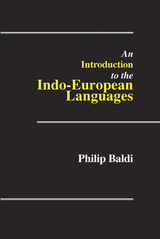 An Introduction to the Indo-European Languages
Philip Baldi
Southern Illinois University Press, 1983 This comprehensive linguistic survey of the Indo-European groups synthesizes the vast amount of information contained in the specialized handbooks of the individual stocks. The text begins with an introduction to the concept of the Indo-European language family, the history of its discovery, and the techniques of analysis. The introduction also gives a structural sketch of Proto-Indo-European, the parent language from which the others are descended. Baldi then devotes a chapter to each of the 11 major branches of Indo-European (Italic, Celtic, Indo-Iranian, Greek, Armenian, Albanian, Baltic, Slavic, Germanic, Tocharian, and Anatolian). Each chapter provides an outline of the external history of the branch, its people, dialects, and other relevant history. This outline is followed by a structural sketch of the most important language or languages of the branch (e.g., Old Irish for Celtic, Sanskrit and Avestan for Indo-Iranian, Latin and Osco-Umbrian for Italic). The sketch also contains the phonology, morphology, and syntax of each language. There is lastly a sample text of each language containing both interlinear and free translation. In those branches where there are special issues (e.g., the relation of Italic to Celtic and Baltic to Slavic, or the problem of archaism in Hittite), additional discussions of these issues are provided. Baldi’s final chapter gives a brief outline of the “minor” Indo-European languages such as Illyrian, Thracian, Raetic, and Phrygian. Adding further to the usefulness of the book are extensive bibliographies, an up-to-date map showing the geographical distribution of the Indo-European languages throughout the world, and a detailed family tree diagram of the members of each subgroup within the Indo-European language family and their interrelationships.
An Introduction to the Language of Drawing and Painting
Arthur Pope
Harvard University Press To understand paintings made by Chinese or Japanese artists or by European artists of the Middle Ages or the Renaissance, it is in a way just as necessary to know the conventions and the points of view which governed their execution, as it is to know Chinese and Italian in order to understand books written in these languages. It is the object of this volume to make the various kinds of drawing and painting intelligible by explaining the conventions and limitations on which they are based. The last chapter deals with the general points of view involved in the “modernistic” art of our own day.
An Introduction to the Language of Drawing and Painting
Arthur Pope
Harvard University Press An attempt to present the theory of tone or color in its application to painting in so far as this complicated subject is understood at the present time. It is intended not only for professional painters but for all students of the art of painting, and is based on the assumption that intelligent criticism and sound judgment must be founded on understanding. Aside from the general theory of tone or color, it discusses the limited or arbitrary treatment of values, colors, and color intensities in much painting of the past; the use of scaled palettes in the Renaissance and at the present day; and design in tone relations. In connection with general theory it clears up certain confusions of thought and terminology found in many scientific books on the subject of color.
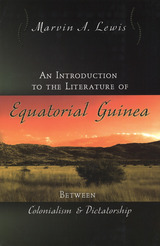 An Introduction to the Literature of Equatorial Guinea: Between Colonialism and Dictatorship
Marvin A. Lewis
University of Missouri Press, 2007
Spain’s only former colony in sub-Saharan Africa, Equatorial Guinea is home to a literature of transition—songs of freedom in which authors reflect on their identity within the context of recent colonialism and dictatorship.
An Introduction to the Literature of Equatorial Guinea is the first book-length critical study of this literature, a multigenre analysis encompassing fifty years of poetry, drama, essays, and prose fiction. Both resident and exiled authors offer insights into the impact of colonialism and dictatorship under Spanish rule and consider the fruits of “independence” under the regimes of Francisco Macías Nguema and Teodoro Obiang Nguema. Examining these works from the perspective of postcolonial theory, Marvin A. Lewis shows how writings from Equatorial Guinea depict the clash of traditional and European cultures and reflect a dictatorship that produced poverty, misery, and oppression. He assesses with particular care the impact of the Macías reafricanization process and its manifestations in literature.
In showing how the views of the nation correspond and diverge in works of writers such as Maria Nsue Angue, Donato Ndongo-Bidyogo, and Juan Tomás Ávila Laurel, Lewis brings to light artists who articulate their concerns in Spanish but are African in their souls. In analyzing the works of both renowned and emerging writers, he marks the themes that contribute to the formation of national identity: Hispanic heritage, the myth of Bantu unity, “bonding in adversity” during the Nguema regime, and the Equatoguinean diaspora.
Lewis provides an accessible introduction to the work of central writers in a new area of literary study and includes the most exhaustive and up-to-date bibliography available on the subject. His is a groundbreaking work that broadens our understanding of African literature and will be the bedrock for future studies of this Hispanic corner of Africa.
An Introduction to the Phenomenology of Performance Art: SELF/s
T. J. Bacon
Intellect Books, 2022 An accessible primer for art students or researchers new to phenomenology.
This book introduces the study and application of performance art through phenomenology, inviting readers to explore contemporary performance art and activate their own practices. Using queer phenomenology to unpack the importance of a multiplicity of self/s, the book teaches readers how to be academically rigorous when capturing embodied experiences. Through approachable exercises, definitions of key phenomenological terms, and interviews and insights from some of the best examples of transgressive performance art practice, the work enriches the wider scholarship of theater studies. Situated within contemporary phenomenological scholarship, the book will appeal to radical artists, educators, and practitioner-researchers.
Introduction to the Smart Grid: Concepts, technologies and evolution
Salman K. Salman
The Institution of Engineering and Technology, 2017 In recent years it has become increasingly apparent that conventional electrical networks cannot meet the requirements of the 21st century. These include reliability, efficiency, liberalisation of electricity markets, as well as effective and seamless integration of various types of renewable energy sources, electric vehicles, and customers as players. The emergence of new technologies such as distributed control, monitoring devices, and tremendous advances in information and communication technology have paved the way to realize the Smart Grid concept.
An Introduction to the Study of Medieval Latin Versification
Dag Norberg
Catholic University of America Press, 2004 Dag Norberg's analysis and interpretation of Medieval Latin versification, which was published in French in 1958 and remains the standard work on the subject, appears here for the first time in English with a detailed, scholarly introduction by Jan Ziolkowski that reviews the developments of the past fifty years.
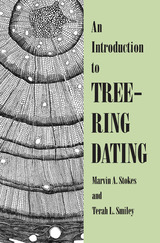 An Introduction to Tree-Ring Dating
Marvin A. Stokes
University of Arizona Press, 1996 Tree-ring dating, or dendrochronology, is the study of the chronological sequence of annual growth rings in trees. This book--a seminal study in its field--provides a simple yet eloquent introduction to the discipline, explaining what a dendrochronologist does both in the field and in the laboratory.
Authors Stokes and Smiley first explain the basic principles of tree-ring dating, then describe details of the process, step by step, from the time a sample is collected until it is incorporated into a master chronology.
The book focuses on coniferous evergreens of the Southwest, particularly piñons, because they have wide geographic distribution, constitute a large population, and show excellent growth response to certain controlling factors. The book is specifically concerned with the task of establishing a calendar date for a wood or charcoal specimen.
This concise but thorough explication of an important discipline will make dendrochonology more meaningful to students and professionals in archaeology, forestry, hydrology, and global change.
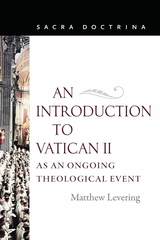 An Introduction to Vatican II as an Ongoing Theological Event
Matthew Levering
Catholic University of America Press, 2017 Contemporary scholars often refer to “the event of Vatican II,” but what kind of an event was it? In this first book of the new CUA Press series Sacra Doctrina, Matthew Levering leads his readers to see the Council as a “theological event”—a period of confirming and continuing God’s self-revelation in Christ into a new historical era for the Church.
This is an introduction to Vatican II with a detailed summary of each of its four central documents—the dogmatic constitutions—followed by explanations of how to interpret them. In contrast to other introductions, which pay little attention to the theological soil in which the documents of Vatican II germinated, Levering offers a reading of each conciliar Constitution in light of a key theological author from the era: René Latourelle, SJ for Dei Verbum (persons and propositions); Louis Bouyer, CO for Sacrosanctum Concilium (active participation); Yves Congar, OP for Lumen Gentium (true and false reform); and Henri de Lubac, SJ for Gaudium et Spes (nature and grace).
This theological event is “ongoing,” Levering demonstrates, by tracing in each chapter the theological debates that have stretched from the close of the council till the present, and the difficulties the Church continues to encounter in encouraging an ever deeper participation in Jesus Christ on the part of all believers. In this light, the book’s final chapter compares the historicist (Massimo Faggioli) and Christological (Robert Imbelli) interpretations of Vatican II, arguing that historicism can undermine the Council’s fundamental desire for a reform and renewal rooted in Christ. The conclusion addresses the concerns about secularization and loss of faith raised after the Council by Henri de Lubac, Joseph Ratzinger, and Yves Congar, arguing that contemporary Vatican II scholarship needs to take these concerns more seriously.
 Introduction to Virtue Ethics: Insights of the Ancient Greeks
Raymond J. Devettere
Georgetown University Press, 2002 This fascinating examination of the development of virtue ethics in the early stages of western civilization deals with a wide range of philosophers and schools of philosophy—from Socrates and the Stoics to Plato, Aristotle, and the Epicureans, among others. This introduction examines those human attributes that we have come to know as the "stuff" of virtue: desire, happiness, the "good," character, the role of pride, prudence, and wisdom, and links them to more current or modern conceptions and controversies. The tension between viewing ethics and morality as fundamentally religious or as fundamentally rational still runs deep in our culture. A second tension centers on whether we view morality primarily in terms of our obligations or primarily in terms of our desires for what is good. The Greek term arete, which we generally translate as "virtue," can also be translated as "excellence." Arete embraced both intellectual and moral excellence as well as human creations and achievements. Useful, certainly, for classrooms, Virtue Ethics is also for anyone interested in the fundamental question Socrates posed, "What kind of life is worth living?"
An Introductory Bibliography to the Study of Hungarian Literature
Albert Tezla
Harvard University Press This bibliography of 1295 titles, based on research in the United States and Europe, is designed for students who are beginning the study of Hungarian literature or undertaking serious research in the subject. It cites basic secondary sources of book length, summarizing their contents; lists important anthologies, series, and editions of major authors; describes 72 relevant periodicals and the most useful English–Hungarian dictionaries; and, because there are few significant collections of Hungarian materials in the United States, reports the locations of all the cited works in 112 American and 28 European libraries.
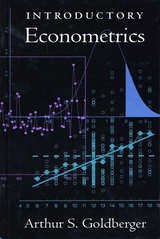 Introductory Econometrics
Arthur S. Goldberger
Harvard University Press, 1998 This is a textbook for the standard undergraduate econometrics course. Its only prerequisites are a semester course in statistics and one in differential calculus. Arthur Goldberger, an outstanding researcher and teacher of econometrics, views the subject as a tool of empirical inquiry rather than as a collection of arcane procedures. The central issue in such inquiry is how one variable is related to one or more others. Goldberger takes this to mean "How does the average value of one variable vary with one or more others?" and so takes the population conditional mean function as the target of empirical research.
The structure of the book is similar to that of Goldberger's graduate-level textbook, A Course in Econometrics, but the new book is richer in empirical material, makes no use of matrix algebra, and is primarily discursive in style. A great strength is that it is both intuitive and formal, with ideas and methods building on one another until the text presents fairly complicated ideas and proofs that are often avoided in undergraduate econometrics.
To help students master the tools of econometrics, Goldberger provides many theoretical and empirical exercises and real micro-and macroeconomic data sets. The data sets, available for download at www.hup.harvard.edu/features/golint/, deal with earnings and education, money demand, firm investment, stock prices, compensation and productivity, and the Phillips curve.
THE DATA SETS CAN BE FOUND HERE.
 Introductory Modal Logic
Kenneth J. Konyndyk, Jr.
University of Notre Dame Press, 1986 Modal logic, developed as an extension of classical propositional logic and first-order quantification theory, integrates the notions of possibility and necessity and necessary implication. Arguments whose understanding depends on some fundamental knowledge of modal logic have always been important in philosophy of religion, metaphysics, and epistemology. Moreover, modal logic has become increasingly important with the use of the concept of “possible worlds” in these areas. Introductory Modal Logic fills the need for a basic text on modal logic, accessible to students of elementary symbolic logic.
Kenneth Konyndyk presents a natural deduction treatment of propositional modal logic and quantified modal logic, historical information about its development, and discussions of the philosophical issues raised by modal logic. Characterized by clear and concrete explanations, appropriate examples, and varied and challenging exercises, Introductory Modal Logic makes both modal logic and the possible-worlds metaphysics readily available to the introductory level student.
An Introductory New Testament Greek Course, Revised Edition
Francis T. Gignac, SJ
Catholic University of America Press, 2015 Many Christians have the desire to read the New Testament in its original language. Unfortunately, books that introduce the student to New Testament Greek either tend to be long-winded, or overly simplified, or both. In this book, legendary scholar of biblical Greek, the late Frank Gignac provides a straight-forward "just the facts" approach to the subject. In fifteen lessons, he presents the basics of the grammar and the vocabulary essential for reading the Gospels in the original language. All the reader need do is to supply the desire to learn. As Gignac writes, "good luck as you begin to learn another language! It may be sheer drudgery for a while, but the thrill will come when you begin to read the New Testament in the language in which it was written."
Introductory Nutrition: Manual of Basic Nutrition Exercises
Sooja K. Kim
University of Wisconsin Press, 1987 This book provides practical applications for nutrition information. Several different aspects of nutrition are included in this book, such as nutrition labeling and anthropometric measurements.
Introspection and Contemporary Poetry
Alan Williamson
Harvard University Press, 1984 In this bold defense of so-called confessional poetry, Alan Williamson shows us that much of the best writing of the past twenty-five years is about the sense of being or having a self, a knowable personal identity. The difficulties posed by this subject help explain the fertility of contemporary poetic experiment—from the jaggedness of the later work of Robert Lowell to the montage—like methods of John Ashbery, from the visual surrealism of James Wright and W. S. Merwin to the radical plainness of Frank Bidart. Williamson examines these and other poets from a psychological perspective, giving an especially striking reading of Sylvia Plath.
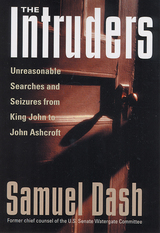 The Intruders: Unreasonable Searches and Seizures from King John to John Ashcroft
Dash, Samuel
Rutgers University Press, 2004 What led to the Fourth Amendment’s protection of the people against unreasonable searches and seizures, codified in written law for the first time in history, and are we in danger of losing that protection? Celebrated lawyer Samuel Dash, known for his role as Chief Counsel of the Watergate Committee, explores the struggle for privacy. He does so by telling the dramatic tales of the people who were involved in influential legal battles, including landmark Supreme Court cases.
Covering almost eight-hundred years of history, Dash begins with the time of King John of England and the Magna Carta, then moves to colonial America as colonists resisted searches mandated under King George. These tensions contributed to the birth of the United States and the adoption of our Bill of Rights with its Fourth Amendment, protecting people against unreasonable searches and seizures. How effective that protection has been is the story of the next two centuries. Dash explores U.S. Supreme Court cases through the sometimes humorous experiences of the people involved, including the unlucky gambler with a shoplifting wife and the police lieutenant turned king of bootleggers. To some extent, judicial safeguarding of Fourth Amendment protections depended on who made up the majority of the Court at any given time.
By 2001 a conservative majority of the Court had given law enforcement agents greater search powers than ever before. Dash challenges the legal justification of the Bush Administration’s grab for greater search, seizure, and wiretap powers after the 9/11 terrorists’ attacks. He reminds us of government abuses of power in prior emergencies in American history. For Dash, the best security is our belief in individual liberty and the enforcement of our Bill of Rights.
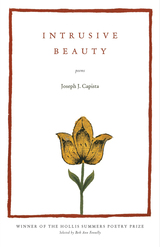 Intrusive Beauty: Poems
Joseph J. Capista
Ohio University Press, 2019 Winner of the 2018 Hollis Summers Poetry Prize Joseph J. Capista’s Intrusive Beauty reckons with reluctant ecstasy and the improbable forms that beauty assumes. In this powerful debut, Capista traverses earth and ether to yield poems that elucidate the space between one’s life and one’s livelihood. While its landscapes range from back-alley Baltimore to the Bitterroot Valley, this book remains close to unbidden beauty and its capacity to sway one’s vision of the world. Whether a young father who won’t lower the volume on the radio or a Victorian farm boy tasked with scaring birds from seed-sown furrows, the inhabitants of Intrusive Beauty are witness to the startling ease with which one’s assorted lives come in time to comprise a singular life. Mortality, love, duty, desire, an acute longing for transcendence: here, old themes resound anew as they’re uttered in a multiplicity of forms and means, holding fast always to the heart.
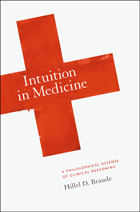 Intuition in Medicine: A Philosophical Defense of Clinical Reasoning
Hillel D. Braude
University of Chicago Press, 2012 Intuition is central to discussions about the nature of scientific and philosophical reasoning and what it means to be human. In this bold and timely book, Hillel D. Braude marshals his dual training as a physician and philosopher to examine the place of intuition in medicine. Rather than defining and using a single concept of intuition—philosophical, practical, or neuroscientific—Braude here examines intuition as it occurs at different levels and in different contexts of clinical reasoning. He argues that not only does intuition provide the bridge between medical reasoning and moral reasoning, but that it also links the epistemological, ontological, and ethical foundations of clinical decision making. In presenting his case, Braude takes readers on a journey through Aristotle’s Ethics—highlighting the significance of practical reasoning in relation to theoretical reasoning and the potential bridge between them—then through current debates between regulators and clinicians on evidence-based medicine, and finally applies the philosophical perspectives of Reichenbach, Popper, and Peirce to analyze the intuitive support for clinical equipoise, a key concept in research ethics. Through his phenomenological study of intuition Braude aims to demonstrate that ethical responsibility for the other lies at the heart of clinical judgment. Braude’s original approach advances medical ethics by using philosophical rigor and history to analyze the tacit underpinnings of clinical reasoning and to introduce clear conceptual distinctions that simultaneously affirm and exacerbate the tension between ethical theory and practice. His study will be welcomed not only by philosophers but also by clinicians eager to justify how they use moral intuitions, and anyone interested in medical decision making.
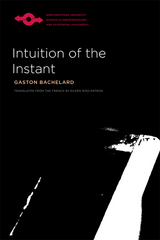 Intuition of the Instant
Gaston Bachelard; Translated from the French by Eileen Rizo-Patron
Northwestern University Press, 2013 Appearing in English for the first time, Intuition of the Instant—Bachelard’s first metaphysical meditation on time and its moral implications—was written in 1932 in the wake of Husserl’s lectures on streaming time-consciousness, Heidegger’s Being and Time, and Henri Bergson’s philosophy of the élan vital. A culmination of Bachelard’s earlier studies in scientific epistemology, this work builds the epistemic framework that would lead theorists of all stripes to advance knowledge by breaking with accepted modes of thought. Intuition of the Instant sows the seeds of Bachelard’s future poetics, most notably in the essay “Poetic Instant and Metaphysical Instant” (1939)—included in this volume, along with an excerpt from Jean Lescure’s lecture “Introduction to Bachelard’s Poetics” (1966). Eileen Rizo-Patron’s translation offers a key to Bachelard’s subsequent works on science, time, and imagination, which remain epistemological touchstones.
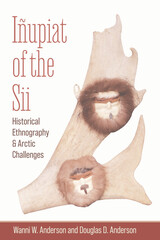 Iñupiat of the Sii: Historical Ethnography and Arctic Challenges
Wanni W. Anderson
University of Alaska Press, 2024 Iñupiat of the Sii is a firsthand account of Wanni and Douglas Anderson’s lived experiences during eight field seasons of archaeological and ethnographic research in Selawik, Alaska, from 1968 to 1994. This study traces the Selawik village’s history, compares Selawikers' past and current lifeways, studies the interfacing of the traditional with the modern, and explores how specific events in the Selawik past continued to shape their lives.
This fascinating book records, preserves, and contributes to the knowledge of the history and cultural lifeways of the Siilaviŋmiut people using contextual and ethnographic writing styles that apply community-based, lived-experience, and sense-of-place approaches. The authors, who have remained in contact with Selawikers since the original research period, center Iñupiaq elders’ and local Iñupiaq historians’ continued commitments to historical knowledge about the past, their ancestors, and their vast repertoire of traditional cultural and environmental knowledge. They portray the particularity of Iñupiaq life as it was lived, sensed, and felt by Selawikers themselves and as experienced by researchers. Quoted observations, conversations, and comments eloquently acknowledge Iñupiaq insiders’ narrative voices.
Providing one of only a few ethnographic reviews of an Alaska Native village, Iñupiat of the Sii will appeal to general readers interested in learning about Iñupiaq lifeways and the experiences of anthropologists in the field. It will also be useful to instructors teaching college-level students how anthropological field research should be conducted, analyzed, and reported.
Iñupiatun Uqaluit Taniktun Sivuninit/Iñupiaq to English Dictionary
Compiled by Edna MacLean
University of Alaska Press, 2014 This is a comprehensive treatment of one of Alaska’s oldest ancestral languages. Through its 19,000 entries and thirty-one appendices—with categories such as kin terms, names of constellations, and a list of explanations—the dictionary is an exceptional blend of linguistic and cultural references.
 The Invaders: How Humans and Their Dogs Drove Neanderthals to Extinction
Pat Shipman
Harvard University Press, 2015 A Times Higher Education Book of the Week
Approximately 200,000 years ago, as modern humans began to radiate out from their evolutionary birthplace in Africa, Neanderthals were already thriving in Europe—descendants of a much earlier migration of the African genus Homo. But when modern humans eventually made their way to Europe 45,000 years ago, Neanderthals suddenly vanished. Ever since the first Neanderthal bones were identified in 1856, scientists have been vexed by the question, why did modern humans survive while their closest known relatives went extinct?
“Shipman admits that scientists have yet to find genetic evidence that would prove her theory. Time will tell if she’s right. For now, read this book for an engagingly comprehensive overview of the rapidly evolving understanding of our own origins.”
—Toby Lester, Wall Street Journal
“Are humans the ultimate invasive species? So contends anthropologist Pat Shipman—and Neanderthals, she opines, were among our first victims. The relationship between Homo sapiens and Homo neanderthalensis is laid out cleanly, along with genetic and other evidence. Shipman posits provocatively that the deciding factor in the triumph of our ancestors was the domestication of wolves.”
—Daniel Cressey, Nature
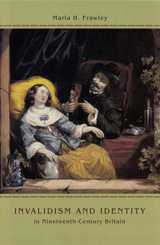 Invalidism and Identity in Nineteenth-Century Britain
Maria H. Frawley
University of Chicago Press, 2004 Nineteenth-century Britain did not invent chronic illness, but its social climate allowed hundreds of men and women, from intellectuals to factory workers, to assume the identity of "invalid." Whether they suffered from a temporary condition or an incurable disease, many wrote about their experiences, leaving behind an astonishingly rich and varied record of disability in Victorian Britain.
Using an array of primary sources, Maria Frawley here constructs a cultural history of invalidism. She describes the ways that Evangelicalism, industrialization, and changing patterns of doctor/patient relationships all converged to allow a culture of invalidism to flourish, and explores what it meant for a person to be designated—or to deem oneself—an invalid. Highlighting how different types of invalids developed distinct rhetorical strategies, her absorbing account reveals that, contrary to popular belief, many of the period's most prominent and prolific invalids were men, while many women found invalidism an unexpected opportunity for authority.
In uncovering the wide range of cultural and social responses to notions of incapacity, Frawley sheds light on our own historical moment, similarly fraught with equally complicated attitudes toward mental and physical disorder.
 Invariances: The Structure of the Objective World
Robert Nozick
Harvard University Press, 2001 Recent scientific advances have placed many traditional philosophical concepts under great stress. In this pathbreaking book, the eminent philosopher Robert Nozick rethinks and transforms the concepts of truth, objectivity, necessity, contingency, consciousness, and ethics. Using an original method, he presents bold new philosophical theories that take account of scientific advances in physics, evolutionary biology, economics, and cognitive neuroscience, and casts current cultural controversies (such as whether all truth is relative and whether ethics is objective) in a wholly new light. Throughout, the book is open to, and engages in, the bold exploration of new philosophical possibilities.
Philosophy will never look the same. Truth is embedded in space-time and is relative to it. However, truth is not socially relative among human beings (extraterrestrials are another matter). Objective facts are invariant under specified transformations; objective beliefs are arrived at by a process in which biasing factors do not play a significant role. Necessity's domain is contracted (there are no important metaphysical necessities; water is not necessarily H2O) while the important and useful notion of degrees of contingency is elaborated. Gradations of consciousness (based upon "common registering") yield increasing capacity to fit actions to the world. The originating function of ethics is cooperation to mutual benefit, and evolution has instilled within humans a "normative module": the capacities to learn, internalize, follow norms, and make evaluations. Ethics has normative force because of the connection between ethics and conscious self-awareness. Nozick brings together the book's novel theories to show the extent to which there are objective ethical truths.
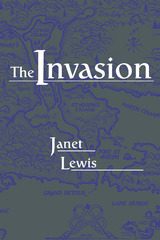 The Invasion
Janet Lewis
Michigan State University Press, 2000 The Invasion, a novel originally published in 1932, marked the debut of historical novelist Janet Lewis, who went on to write numerous poems and short stories as well as the novels The Wife of Martin Guerre and The Trial of Soren Quist. Lewis grew up in the Lake country of the Old Northwest and The Invasion is based on family stories she heard as a child.The Invasion displays well-researched historical accuracy, an innate understanding of and feeling for Native American culture enhanced by the author's fluency in the Ojibway language, and an economy of style that is remarkable for a first novel.
In 1790, John Johnston, a cultivated young Irishman, came to the far corner of the Northwest Territory to make his fortune intending to spend only a year. Instead he married Ozhah-guscoday- wayquay (The Woman of the Glade), daughter of the Ojibway chief Waub- ojeeg, and settled on the St. Mary's River. Together they founded a family that was loved, respected, and famous throughout the region for honesty, fairness, and hospitality. Their home was the center of culture for the area and for every visiting traveler, Native American or white. The Invasion chronicles a time when one culture violently supplanted another even as it depicts a family that blends two cultures together.
Henry Rowe Schoolcraft considered the Johnston family his most valued connection to the Native American population. He eventually married Jane Johnston, daughter of John and The Woman of the Glade, and remain close to her entire family. In his diary, Schoolcraft wrote of the Johnstons, "I have in fact stumbled, as it were, on the only family in Northwest America who could in Indian lore have acted as my guide, philosopher, and friend."
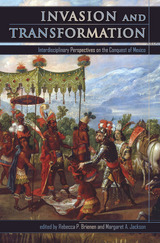 Invasion and Transformation: Interdisciplinary Perspectives on the Conquest of Mexico
Rebecca P. Brienen
University Press of Colorado, 2020 Invasion and Transformation examines the Spanish conquest of the Aztec Empire and transformations in political, social, cultural, and religious life in Mexico during the Conquest and the ensuing colonial period. In particular, contributors consider the ways in which the Conquest itself was remembered, both in its immediate aftermath and in later centuries. Was Moteuczoma really as weak as history portrayed him? As Susan D. Gillespie instead suggests in "Blaming Moteuczoma," the representation of Moteuczoma as a scapegoat for the Aztec defeat can be understood as a product of indigenous resistance and accommodation following the imposition of Spanish colonialism. Chapters address the various roles (real and imagined) of Moteuczoma, Cortés, and Malinche in the fall of the Aztecs; the representation of history in colonial art; and the complex cultural transformations that actually took place. Including full-color reproductions of seventeenth-century paintings of the Conquest, Invasion and Transformation will appeal to scholars and students of Latin American history and anthropology, art history, colonial literature, and transatlantic studies. Contributors include Rebecca P. Brienen, Louise M. Burkhart, Ximena Chávez Balderas, Constance Cortez, Viviana Diáz Balsera, Martha Few, Susan D. Gillespie, Margaret A. Jackson, Diana Magaloni Kerpel, Matthew Restall, Michael Schreffler.
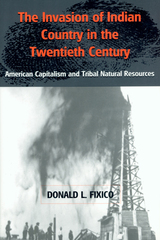 Invasion of Indian Country in the Twentieth Century: American Capitalism and Tribal Natural Resources
Donald Fixico
University Press of Colorado, 1998 The struggle between Indians and whites for land did not end on the battlefields in the 1800s. When this hostile era closed with Native Americans forced onto reservations, no one expected that rich natural resources lay beneath these lands that white America would desperately desire. Yet oil, timber, fish, coal, water, and other resources were discovered to be in great demand in the mainstream market, and a new war began with Indian tribes and their leaders trying to protect their tribal natural resources throughout the twentieth century.
In The Invasion of Indian Country in the 20th Century, Donald Fixico details the course of this struggle, providing a wealth of information on the resources possessed by individual tribes and the way in which they were systematically defrauded and stripped of these resources. Fixico contends that federal policies originally devised to protect Indian interests ironically worked against the Indian nations as the tribes employed new tactics with the Council of Energy Resources Tribes, using the law in courts and applying aggressive business leadership to combat the capitalist invasion by mainstream America.
Fixico's analysis of this war being waged throughout the century and today serves as an indispensable reference tool for anyone interested in Native American history and current government policy with regard to Indian lands.
The Invasion of Indian Country in the Twentieth Century: American Capitalism and Tribal Natural Resources, Second Edition
Donald Fixico
University Press of Colorado, 2012 The Invasion of Indian Country in the Twentieth Century, Second Edition is updated through the first decade of the twenty-first century and contains a new chapter challenging Americans--Indian and non-Indian--to begin healing the earth. This analysis of the struggle to protect not only natural resources but also a way of life serves as an indispensable tool for students or anyone interested in Native American history and current government policy with regard to Indian lands or the environment.
 Invasion of the Body: Revolutions in Surgery
Nicholas L. Tilney
Harvard University Press, 2011 In 1913, the Peter Bent Brigham Hospital in Boston admitted its first patient, Mary Agnes Turner, who suffered from varicose veins in her legs. The surgical treatment she received, under ether anesthesia, was the most advanced available at the time. At the same hospital fifty years later, Nicholas Tilney—then a second-year resident—assisted in the repair of a large aortic aneurysm. The cutting-edge diagnostic tools he used to evaluate the patient’s condition would soon be eclipsed by yet more sophisticated apparatus, including minimally invasive approaches and state-of-the-art imaging technology, which Tilney would draw on in pioneering organ transplant surgery and becoming one of its most distinguished practitioners.
In Invasion of the Body, Tilney tells the story of modern surgery and the revolutions that have transformed the field: anesthesia, prevention of infection, professional standards of competency, pharmaceutical advances, and the present turmoil in medical education and health care reform. Tilney uses as his stage the famous Boston teaching hospital where he completed his residency and went on to practice (now called Brigham and Women's). His cast of characters includes clinicians, support staff, trainees, patients, families, and various applied scientists who push the revolutions forward.
While lauding the innovations that have brought surgeons' capabilities to heights undreamed of even a few decades ago, Tilney also previews a challenging future, as new capacities to prolong life and restore health run headlong into unsustainable costs. The authoritative voice he brings to the ancient tradition of surgical invasion will be welcomed by patients, practitioners, and policymakers alike.
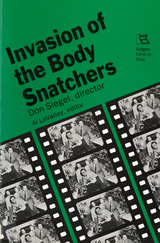 Invasion of the Body Snatchers: Don Siegel, director
LaValley, Al
Rutgers University Press, 1989 Invasion of the Body Snatchers (1956) is a low-budget science fiction film that has become a classic. The suspense of the film lies in discovering, along with Miles, the central character (played by Kevin McCarthy), who is "real" and who is not, and whether Miles and Becky (played by Dana Wynter) will escape the pod takeover. As the center of the film moves outward from a small-town group of neighbors to the larger political scene and institutional network (of police, the FBI, hospital workers), the ultimate question is whether "they" have taken over altogether. Although Invasion can be interpreted in interesting ways along psychological and feminist lines, its importance as a text has centered primarily on political and sociological readings. In his introduction to this volume, Al LaValley explores the politics of the original author of the magazine serial story on which the film is based, Don Siegel; and of its screenwriter, Daniel Mainwaring. And he looks at the ways the studio (Allied Artists) tried to neutralize certain readings by tacking on an explanatory frame story. The commentary section includes readings by Stephen King, Peter Biskind, Nora Sayre, and Peter Bogdanovich. A section of postproduction documents reproduced here (many for the first time) includes many written by Wanger and Siegel. The volume also contains two previously unpublished framing scripts written for Orson Welles. For students and individual enthusiasts, the contextual materials are particularly interesting in showing how crucial the postproduction history of a film can be. A filmography and bibliography are also included in the volume. Al LaValley is the director of film studies at Dartmouth. He is the author of many articles on film and editor of Mildred Pierce in the Wisconsin screenplay series.
The Invasion of the Dutch East Indies
Edited and Translated by Willem Remmelink
Leiden University Press, 2015 Between 1966 and 1980, the War History Office of the National Defense College of Japan published a 102-volume military history of Imperial Japan’s involvement in the Pacific War. This book, the first full and unabridged translation of a volume from the series, describes in great detail the operation to capture the Dutch East Indies, which at the time was the largest transoceanic landing operation ever attempted.
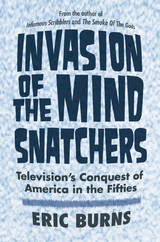 Invasion of the Mind Snatchers: Television's Conquest of America in the Fifties
Eric Burns
Temple University Press, 2010 When the first television was demonstrated in 1927, a headline in The New York Times read, “Like a Photo Come to Life.” It was a momentous occasion. But the power of television wasn’t fully harnessed until the 1950s, when the medium was, as Eric Burns says, “At its most preoccupying, its most life-altering.” And Burns, a former NBC News correspondent who is an Emmy-winner for his broadcast writing, knows about the impact of television. Invasion of the Mind Snatchers chronicles the influence of television that was watched daily by the baby boomer generation. As kids became spellbound by Howdy Doody and The Ed Sullivan Show, Burns reveals, they often acted out their favorite programs. Likewise, they purchased the merchandise being promoted by performers, and became fascinated by the personalities they saw on screen, often emulating their behavior. It was the first generation raised by TV and Burns looks at both the promise of broadcasting as espoused by the inventors, and how that promise was both redefined and lost by the corporations who helped to spread the technology. Yet Burns also contextualizes the social, cultural, and political events that helped shape the Fifties—from Sputnik and the Rosenberg trial to Senator Joseph McCarthy’s Red Scare. In doing so, he charts the effect of television on politics, religion, race, and sex, and how the medium provided a persuasive message to the young, impressionable viewers.
 The Invasion of the South: Army Air Force Operations, and the Invasion of Northern and Central Sumatra
Edited and Translated by Willem Remmelink
Leiden University Press, 2021 Between 1966 and 1980, the War History Office of the National Defense College of Japan (now the Center for Military History of the National Institute for Defense Studies) published the 102-volume Senshi S.sho (War History Series). The present book completes the trilogy of English translations of the sections in the Senshi S.sho series on the Japanese operations against the former Dutch East Indies (Indonesia). The first volume (The Invasion of the Dutch East Indies, 2015) details the army operations, the second volume (The Operations of the Navy in the Dutch East Indies and the Bay of Bengal, 2018) the navy operations, and this third volume the army air force operations. The three volumes provide an unparalleled insight into the Japanese campaign to capture Southeast Asia and the oil fields in the Indonesian archipelago in what was at that time the largest transoceanic landing operation in the military history of the world. It was also the first time in history that air power was employed with devastating effect over such enormous distances, posing complex technical and logistical problems.
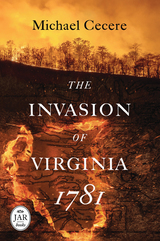 The Invasion of Virginia, 1781
Michael Cecere
Westholme Publishing, 2017 Britain's Attempt to Subdue Virginia and End the Revolution
The American War for Independence was fought in nearly every colony, but some colonies witnessed far more conflict than others. In the first half of the war, the bulk of military operations were concentrated in Massachusetts, New York, New Jersey, and Pennsylvania. A shift in British strategy southward after the Battle of Monmouth in 1778 triggered numerous military engagements in 1779 and 1780 in Georgia and the Carolinas.Surprisingly, Virginia, the largest of the original thirteen colonies, saw relatively little fighting for the first six years of the Revolutionary War. This changed in 1781 when British and American forces converged on Virginia. The war’s arrival did not result from one particular decision or event, but rather, a series of incidents and battles beginning in the fall of 1780 at Kings Mountain, South Carolina.
Benedict Arnold’s sudden appearance in Virginia in early 1781 with 1,600 seasoned British troops and his successful raid up the James River to Richmond and subsequent occupation of Portsmouth, demonstrated Virginia’s vulnerability to attack and the possibility that the colonies could be divided and subdued piecemeal, a strategy Britain had attempted to deploy several times earlier in the war. British General Henry Clinton’s decision to reinforce Arnold in Virginia expanded Britain’s hold on the colony while events in North Carolina, including the battle of Guilford Court House, led British General Charles Cornwallis to conclude that defeating the Patriots in Virginia was the key to ending the war. As a result, Cornwallis marched his army north in May 1781 to assume command of what was now a very powerful British force of over 7,000 troops. The war had returned to Virginia with a vengeance, and how it did so and what happened as a result is the focus of The Invasion of Virginia 1781.
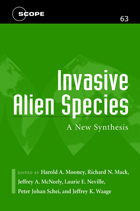 Invasive Alien Species: A New Synthesis
Edited by Harold A. Mooney, Richard N. Mack, Jeffrey A. McNeely, Laurie E. Neville, Peter Johan Schei, and Jeffrey K. Waage
Island Press, 2005 Invasive alien species are among today's most daunting environmental threats, costing billions of dollars in economic damages and wreaking havoc on ecosystems around the world. In 1997, a consortium of scientific organizations including SCOPE, IUCN, and CABI developed the Global Invasive Species Programme (GISP) with the explicit objective of providing new tools for understanding and coping with invasive alien species. Invasive Alien Species is the final report of GISP's first phase of operation, 1997-2000, in which authorities from more than thirty countries worked to examine invasions as a worldwide environmental hazard. The book brings together the world's leading scientists and researchers involved with invasive alien species to offer a comprehensive summary and synthesis of the current state of knowledge on the subject. Invasive alien species represent a critical threat to natural ecosystems and native biodiversity, as well as to human economic vitality and health. The knowledge gained to date in understanding and combating invasive alien species can form a useful basis on which to build strategies for controlling or minimizing the effects in the future. Invasive Alien Species is an essential reference for the international community of investigators concerned with biological invasions.
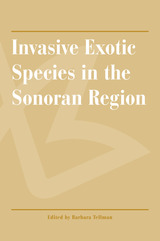 Invasive Exotic Species in the Sonoran Region
Edited by Barbara Tellman
University of Arizona Press, 2002 All over the planet, organisms of many species are appearing outside of their natural habitats—often carried by that particularly peripatetic species Homo sapiens. This book marks the first comprehensive attempt to address problems posed by expanding populations of exotic plant and animal species in the Sonoran Desert and adjacent grasslands and riparian areas. It describes the arrival and spread of non-native species as diverse as rats and saltcedar, covering both their impacts and the management of those impacts. It is estimated that as much as 60 percent of the vegetative cover of the Sonoita Creek-Patagonia Reserve, the first Nature Conservancy area designated in Arizona, is dominated by exotic plants, and that introduced fish pose a recurrent threat to the native fish of that area. Meanwhile at the Grand Canyon, invasives such as tamarisk, red brome, carp, and catfish are pervasive either in the Colorado River or in the patches of desert scrub along its shores. Throughout the Sonoran Desert and adjacent areas, from islands in the Sea of Cortés to desert grasslands, some six hundred species of non-native plants and animals have become established, with bullfrogs and Mediterranean grasses now common where they once never existed.
The book brings together contributors from academia, government, and nonprofit organizations, including such experts as Gary Paul Nabhan, Richard Mack, and Alberto Búrquez-Montijo. They review historic and even prehistoric origins of non-native species—not only exotic plants, amphibians, and mammals but also insects, fish, and birds. They then examine significant problems in each major subregion and ecosystem and discuss control efforts. The volume contains the first compiled list of more than 500 naturalized exotic species in the Sonoran region. Invasive species issues are rapidly emerging as major environmental concerns both locally and worldwide. This book assists professionals—ecologists, conservation biologists, and policy makers—involved in invasive species control in the Southwest and will be a rich resource for all concerned with protecting native species and their habitats.
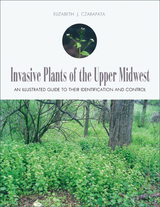 Invasive Plants of the Upper Midwest: An Illustrated Guide to Their Identification and Control
Elizabeth J. Czarapata
University of Wisconsin Press, 2005 Invasive Plants of the Upper Midwest is an informative, colorful, comprehensive guide to invasive species that are currently endangering native habitats in the region. It will be an essential resource for land managers, nature lovers, property owners, farmers, landscapers, educators, botanists, foresters, and gardeners.
Invasive plants are a growing threat to ecosystems everywhere. Often originating in distant climes, they spread to woodlands, wetlands, prairies, roadsides, and backyards that lack the biological controls which kept these plant populations in check in their homelands.
Invasive Plants of the Upper Midwest includes more than 250 color photos that will help anyone identify problem trees, shrubs, vines, grasses, sedges, and herbaceous plants (including aquatic invaders). The text offers further details of plant identification; manual, mechanical, biological, and chemical control techniques; information and advice about herbicides; and suggestions for related ecological restoration and community education efforts. Also included are literature references, a glossary, a matrix of existing and potential invasive species in the Upper Midwest, an index with both scientific and common plant names, advice on state agencies to contact with invasive plant questions, and other helpful resources.
The information in this book has been carefully reviewed by staffs of the Wisconsin Department of Natural Resources Bureau of Endangered Resources and the University of Wisconsin-Madison Arboretum and other invasive plant experts.
|
|

